Britain's Very Best Attractions To See In Your Lifetime
The country's best
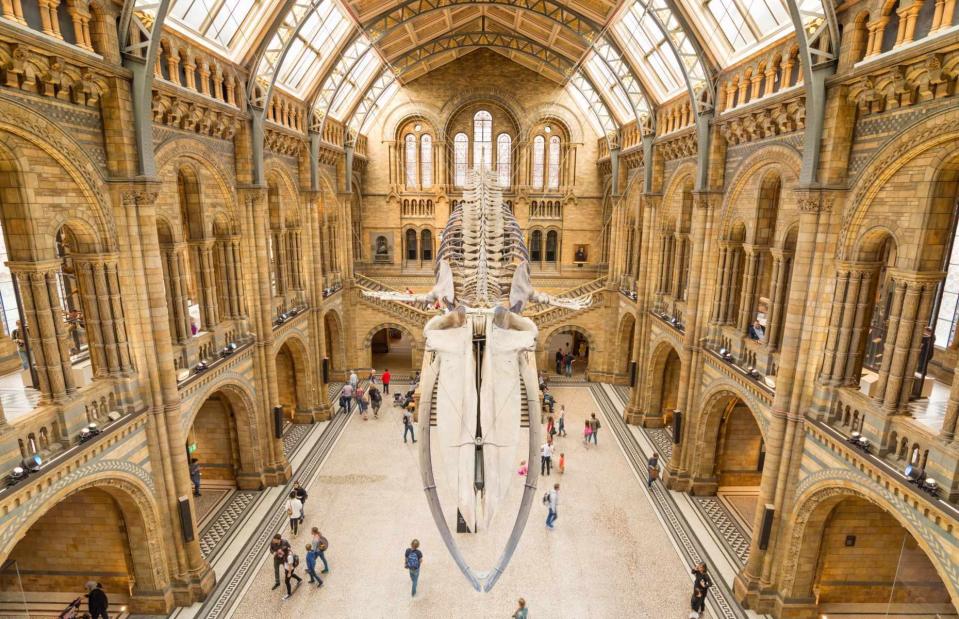
Alex Segre/Alamy Stock Photo
Britain is an undisputed world leader for historic monuments, museums, gardens, architecture and the arts. You can visit everything from natural history museums and 13th-century castles to enormous statues set into the landscape and galleries with contemporary and classical masterpieces on show. Here are the best tourist attractions in England, Scotland and Wales.
Burrell Collection, Glasgow, Scotland
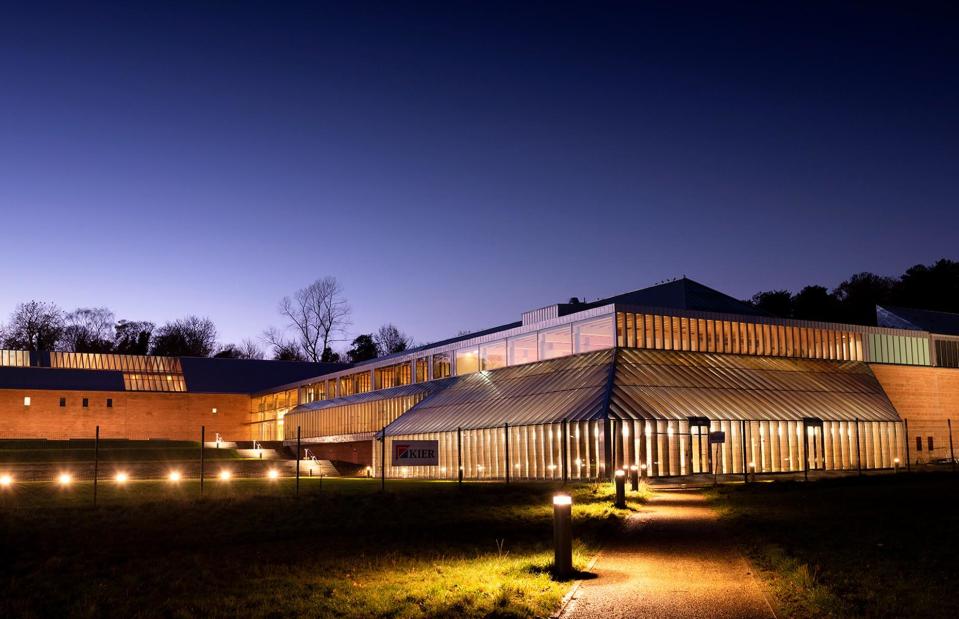
Glasgow Museums and Libraries Collections
Glasgow's Burrell Collection is home to one of the world's greatest single person collections and has finally reopened after a six-year, £68-million ($89m) refurbishment. Based in the city's largest green space, Pollok Country Park, the reimagined building can now display more of its remarkable nine thousand-piece collection. Glass-walled galleries house paintings across five centuries and artwork across six millennia, including works by French artists Manet, Rodin, Degas and Cézanne as well as stained glass, tapestries and Chinese pottery and porcelain.
Blackpool Tower, Blackpool, England
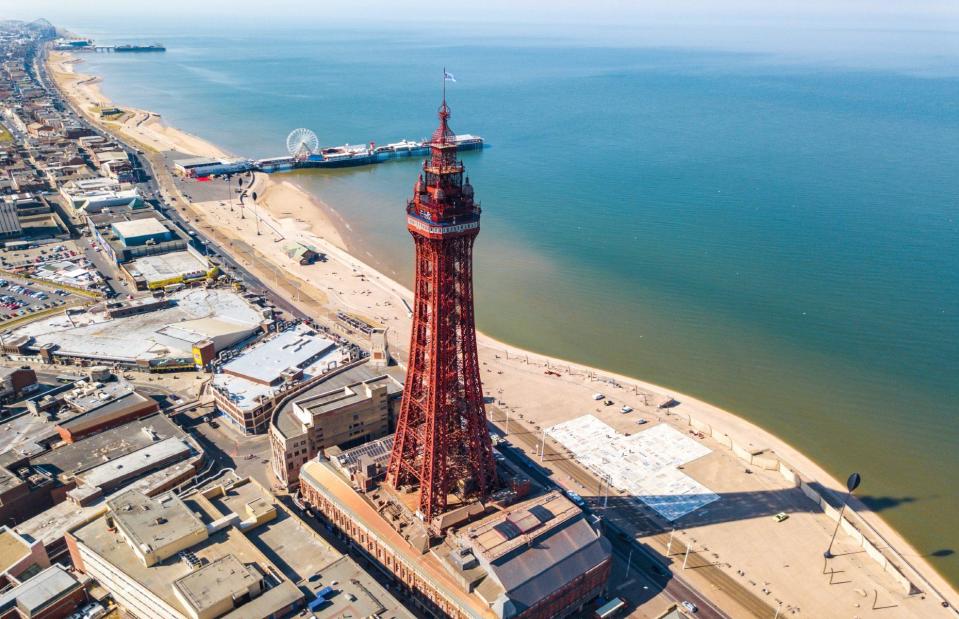
Jessica Dale/Shutterstock
Blackpool’s mighty 518-foot (158m) tower has crowned Lancashire’s much-loved seafront for over 150 years. Inspired by the Eiffel Tower, the structure was designed by Lancashire architects James Maxwell and Charles Tuke and first opened to the public in 1894. The landmark is best known for its breathtaking Tower Ballroom, designed by Frank Matcham, which is famed for its elegant architecture and sprung dance floor. Soaring over Blackpool's Golden Mile, the tower provides sweeping panoramas across the coastline.
National Museum of Scotland, Edinburgh, Scotland
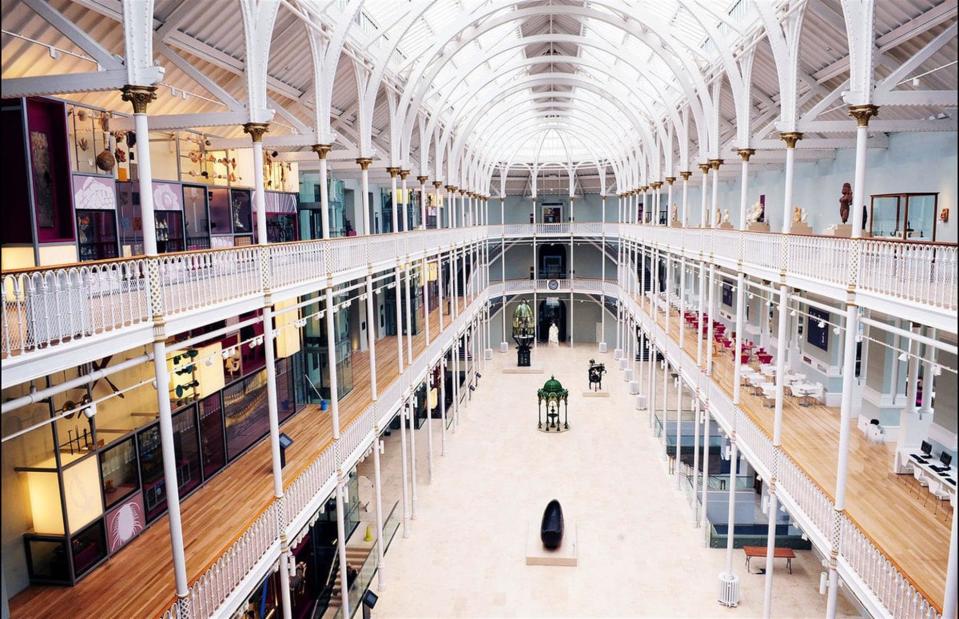
National Museums Scotland/Facebook
In the heart of Edinburgh, the National Museum of Scotland explores cultural and natural history across the globe as well as the country through the ages. Founded in 2006, it was formed when the Museum of Scotland and the Royal Scottish Museum were merged. Today, the National Museum of Scotland has a vast collection of 12 million items spanning everything from dinosaur fossils to Scottish treasures. The Grand Gallery is the biggest draw, featuring the four-storey Window on the World installation that holds over 800 objects including a four-seater bike and an elephant’s skull.
Read our full guide to Edinburgh
Brighton Palace Pier, Brighton, England
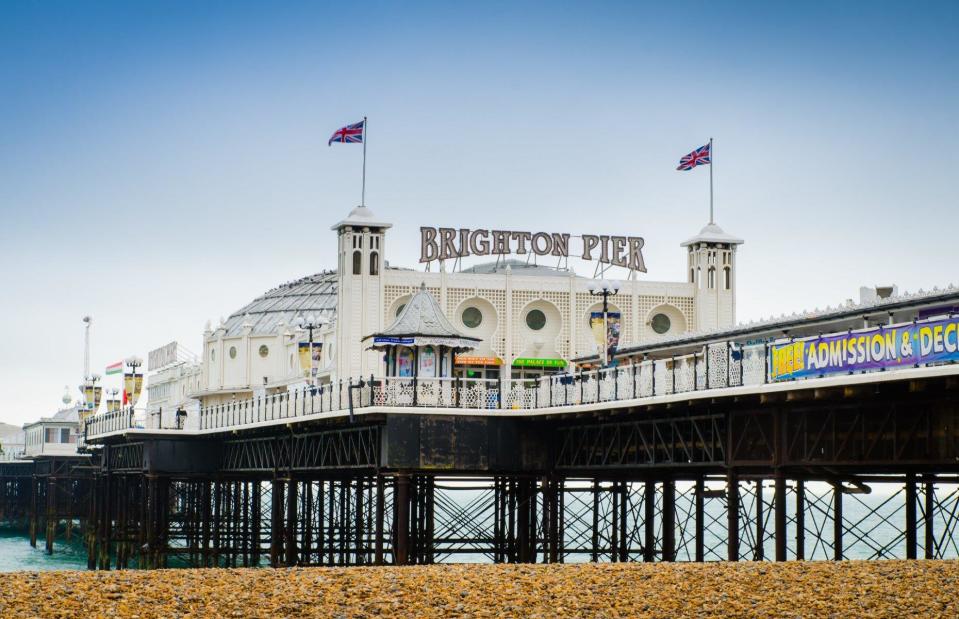
Steve Buckley/Shutterstock
Known as England's premier seaside resort, Brighton’s 1,722-foot (522m) pier is one of the best examples of a pleasure pier in the world. Opened in 1899, the Victorian pier transformed Brighton into one of the most popular holiday destinations in the country. Today, the pier offers a mixture of vintage and modern attractions including fairground rides like the carousel and the Palace of Fun, an amusement arcade offering classic beside-the-sea fare such as fish and chips.
Angel of the North, Gateshead, England

nagelestock.com/Alamy Stock Photo
Towering over the A1 on the mound of an abandoned coal mine in Gateshead, Antony Gormley’s incredible sculpture has been a defining landmark of England's northeast for over 20 years. Completed in 1998 and standing 66-foot tall (20m), the wingspan of the mighty steel structure is nearly as wide as a jumbo jet at an eye-watering 177-foot across (54m). The glorious sculpture has become one of Britain’s most recognisable sights.
Love this? Follow our Facebook page for more travel inspiration
Falkirk Wheel, Falkirk, Scotland

Nick Fox/Shutterstock
A mechanical marvel of Scotland’s waterways, the Falkirk Wheel is the world’s first and only rotating boatlift. Situated in central Scotland, it was built to connect the Forth & Clyde Canal and the Union Canal, allowing coast-to-coast navigation across the heart of the country. Standing 115-foot tall (35m), this incredible structure moves boats between the two canals powered only by the same amount of energy used to boil eight domestic kettles. Hailed as an impressive feat of 21st-century engineering, the Falkirk wheel has become a popular Scottish attraction.
Big Pit National Coal Museum, Monmouthshire, Wales
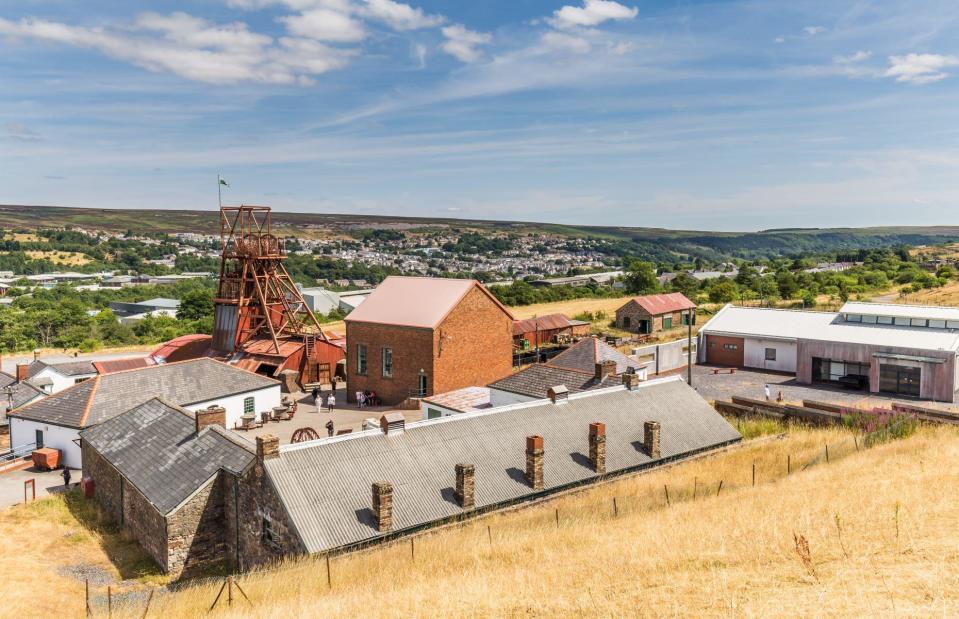
INTREEGUE Photography/Shutterstock
Situated in South Wales, the former Big Pit Colliery is the crown jewel of Blaenavon’s historic mining landscape. The last working mine of the site until it closed in 1980, Big Pit is now a museum exploring the history of Blaenavon’s once-booming mining industry during the late 18th and early 19th century. Visitors can descend 300 feet (90m) beneath the old colliery and explore its maze of subterranean passageways and tunnels that were carved out during the Industrial Revolution. Big Pit, alongside the Blaenavon area, is a World Heritage Site.
Explore more of the UK’s most amazing World Heritage Sites
Stonehenge, Wiltshire, England
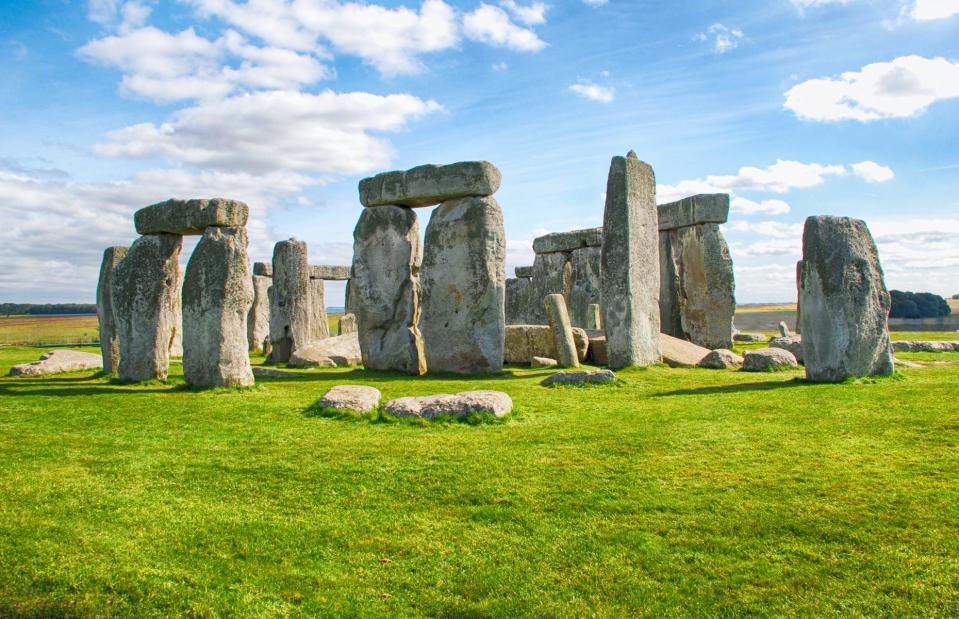
MrNai/Shutterstock
The most famous prehistoric monument in Britain, Stonehenge has been part of a UNESCO World Heritage Site along with nearby Avebury in Wiltshire since 1986. Erected in the late Neolithic period around 2500 BC, the mystery of why the mammoth stones were erected and brought here from Wales has intrigued visitors for centuries. Dramatically framing Wiltshire’s Salisbury Plain, the spectacular stone circle is one of the most breathtaking ancient attractions in the world.
Discover more mysterious stone circles still baffling experts
Eden Project, Cornwall, England

robertharding/Alamy Stock Photo
Built in an old clay pit, the Eden Project’s distinct geodesic domes are a world-renowned visitor attraction in south Cornwall. Designed by Nicholas Grimshaw, the huge tropical garden complex first opened to the public in 2001. Today, its incredible biomes are home to thousands of different species of plants and trees from across the globe including West Africa and South America and its impressive Rainforest Biome is the largest indoor rainforest in the world.
Royal Yacht Britannia, Edinburgh, Scotland

The Royal Yacht BRITANNIA/Facebook
Formerly the yacht of the Royal Family, the Royal Yacht Britannia is one of the most famous ships in the world. Launched in 1953, it was the last in a long line of royal yachts, commissioned by King George VI shortly before he died. The impressive vessel travelled just over a million nautical miles in service to the Queen – calling at more than 600 ports in 135 countries. Many famous political leaders stepped aboard the ship, including Sir Winston Churchill, Nelson Mandela and Bill Clinton. Today, the yacht is berthed in Leith, Edinburgh and has been turned into a fascinating museum.
Hampton Court Palace, London, England
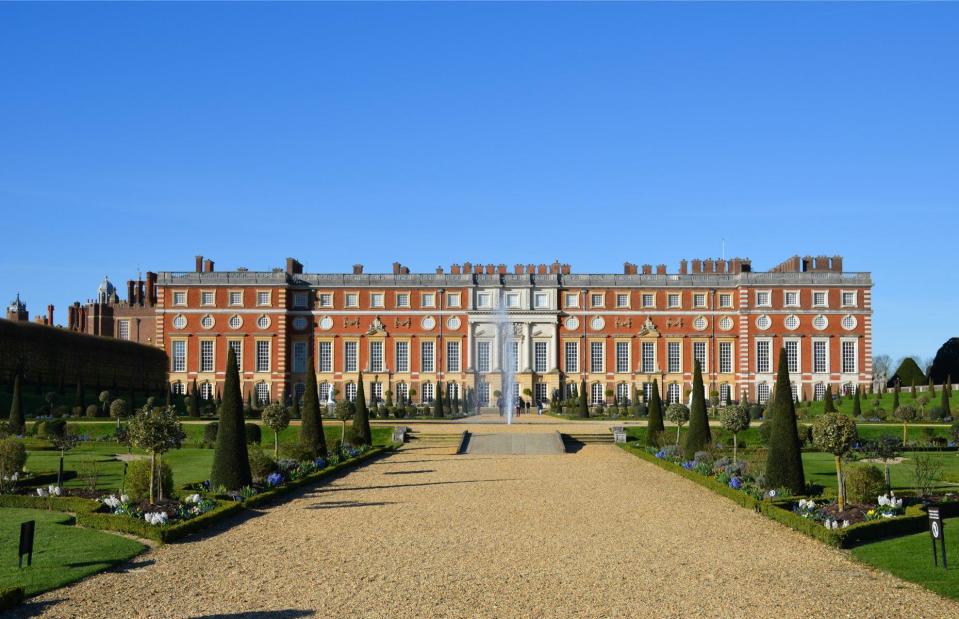
iolya/Shutterstock
Nestled on the banks of the Thames in west London, this grand Tudor estate is the former pleasure palace of King Henry VIII. Built in the early 16th century, Hampton Court was originally the home of Cardinal Wolsey which Henry VIII transformed into an extravagant playground for entertaining. Inside, the magnificent tapestry-clad Great Hall is where the lavish banquets would take place while the Great Kitchen once served up to 1,600 meals a day. Another highlight is Hampton’s gorgeous gardens, home to the oldest surviving hedge maze in the UK.
Pitt Rivers Museum, Oxford, England
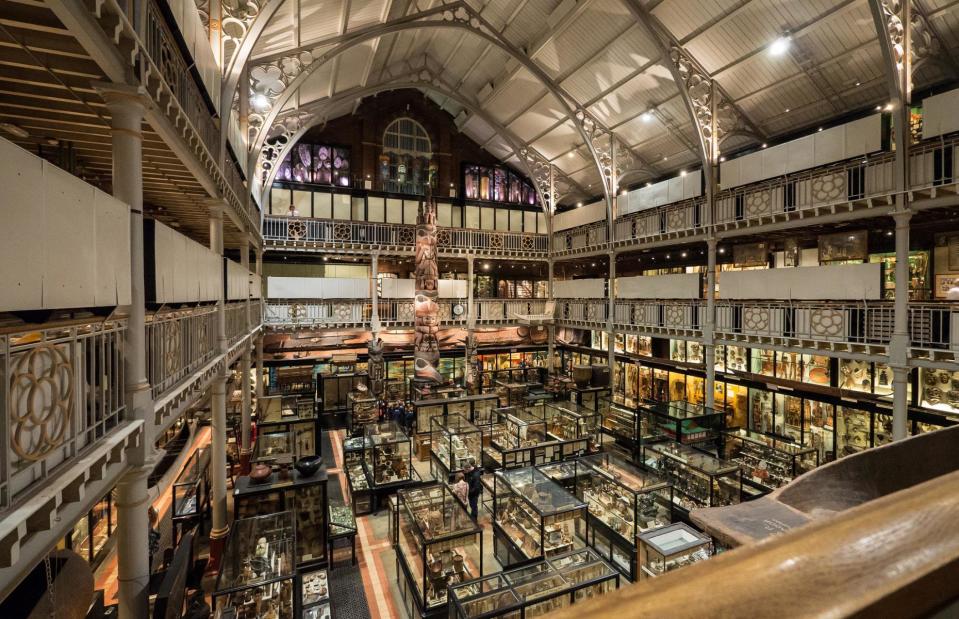
Michael Brace/Flickr/CC BY-NC-ND 2.0
At the rear of the Oxford University Museum of Natural History, the Pitt Rivers Museum in Oxford is home to over half a million archaeological and ethnographic objects. Founded in 1884, it was named after General Pitt-Rivers who donated his collection to the university. The museum is now home to items from all over the world, ranging from ancient amulets and charms to an impressive amount of 19th and early 20th century photographs.
These are the top things to see and do in Oxford
Mary King’s Close, Edinburgh, Scotland
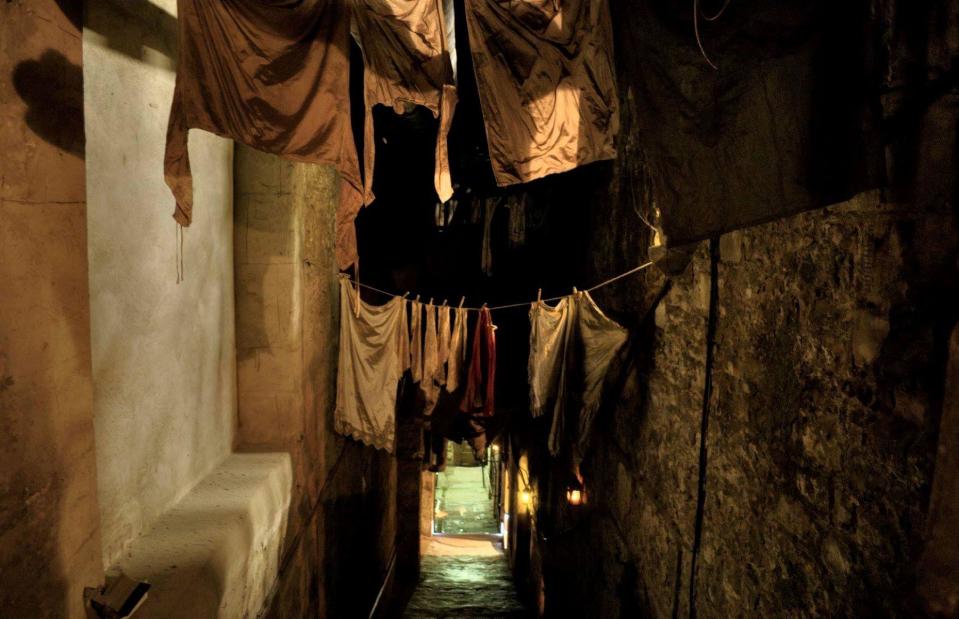
The Real Mary King’s Close/Facebook
Hidden below the cobbled streets and historic architecture of Edinburgh’s Old Town is an eerie subterranean world frozen in time. Buried following the construction of the Royal Exchange, a mysterious maze of alleys, homes and passageways make up the only 17th century preserved street in Edinburgh. Mary King’s Close has become one of the city’s most unusual visitor attractions.
V&A Museum of Design, Dundee, Scotland

janester64/Shutterstock
In 2018 Dundee emerged as Scotland’s must-visit arts and design destination after the V&A Museum of Design opened as part of a £1 billion waterfront regeneration. Situated right next to RRS Discovery, the ship that took Shackleton and Scott to Antarctica, the striking V&A boasts plenty of exciting exhibits and installations.
Roman Baths, Bath, England
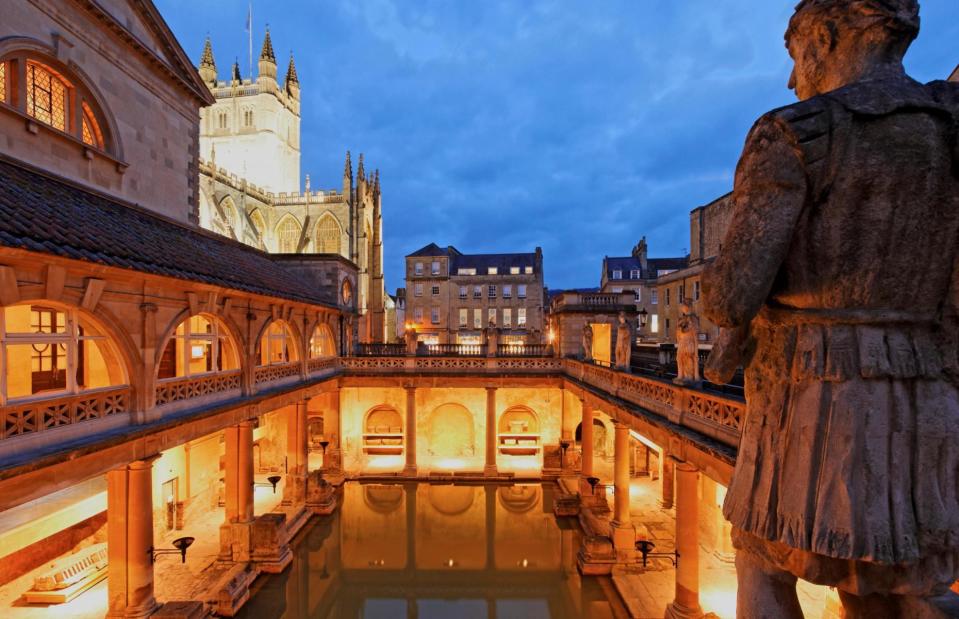
Image Professionals GmbH/Alamy Stock Photo
This well-preserved ancient bathing complex is the sparkling jewel of the historic city of Bath. Dating back to the 1st century AD, the baths were built around natural hot springs within a Roman settlement known as Aquae Sulis, along with a temple dedicated to the goddess of the springs Sulis Minerva. Lined with impressive columns, the ruins of the beautiful Great Bath lies in the middle of the ancient complex that is now the city’s biggest attraction and earned Bath its World Heritage status in 1987.
Check out more of Britain’s most historic towns and cities
Shakespeare's Birthplace, Stratford-upon-Avon
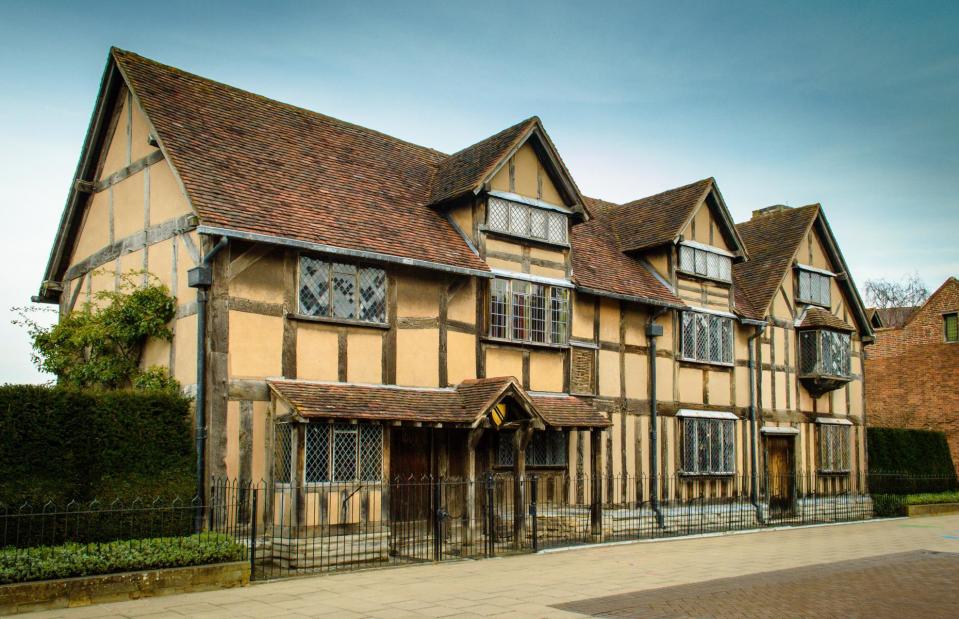
Chris Fossey Photography/Shutterstock
Famed for being the birthplace of England’s greatest playwright William Shakespeare, Stratford-upon-Avon is a pretty medieval market town in the West Midlands. Shakespeare’s iconic 16th-century childhood home is located near the banks of the River Avon. The half-timbered house has been beautifully restored and transformed into a museum exploring the writer’s life in the town.
Caernarfon Castle, Gwynedd, Wales

S-F/Shutterstock
Dating back to the 13th century, this impressive fortress in the royal town of Caernarfon is often hailed as one of the most beautiful castles in Wales. Built by Edward I on the Menai Strait, it took a staggering 47 years to complete the castle alongside three other fortresses – Conwy, Beaumaris and Harlech – as well as town walls and a quay. Considered the finest surviving examples of 13th-century military architecture in Europe, the castles and walls of Caernarfon were awarded World Heritage status in 1986.
Discover more Welsh castles you can visit
Albert Docks, Liverpool, England
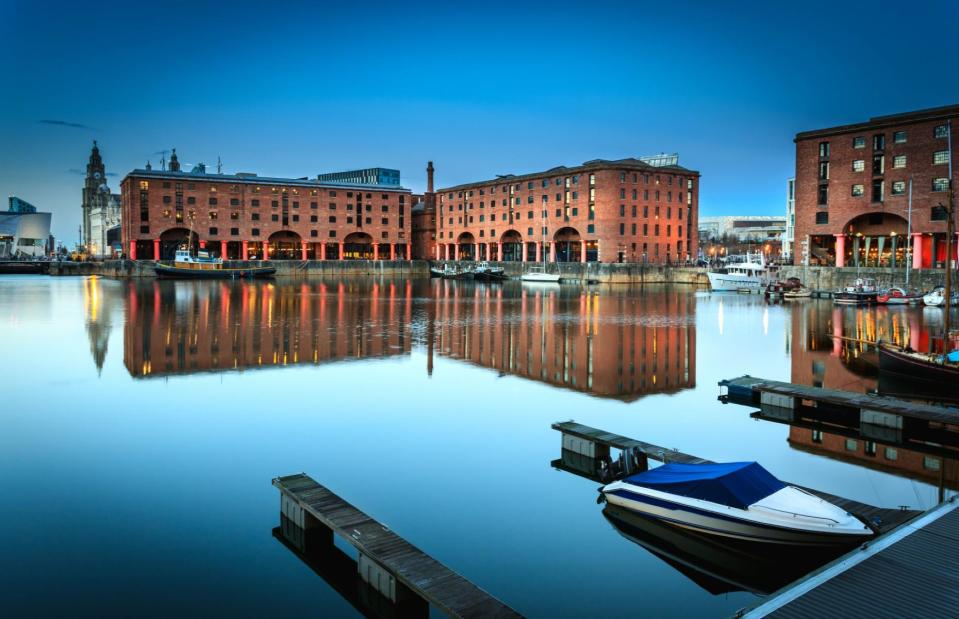
SAKhanPhotography/Shutterstock
Situated on Liverpool’s world-renowned waterfront, the breathtakingly beautiful Albert Dock is home to the largest collection of Grade I-listed buildings in the UK. Established in 1846, the port became one of the world’s largest trading centres and it played a large role in the transatlantic slave trade during the 18th century. Following its closure in 1972, the dock’s old warehouses have become a vibrant cultural attraction, featuring the Tate Liverpool, The Merseyside Maritime Museum and the International Slavery Museum.
Edinburgh Castle, Edinburgh, Scotland
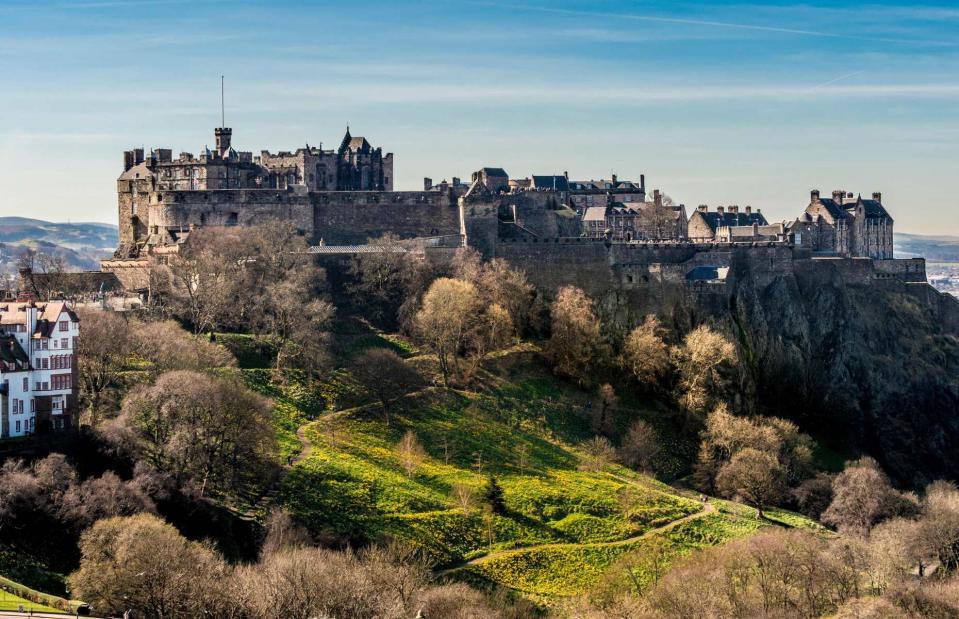
Bailey-Cooper Photography/Alamy Stock Photo
Edinburgh Castle has watched over Scotland's capital city from its lofty site on a rugged volcanic plug for centuries. Built during the 12th century by King David I, the son of Saint Margaret of Scotland, the fortress was the home of Scottish kings and queens until the union of the crowns in 1603. The castle’s St Margaret's Chapel was built by King David I in his mother’s honour and is the oldest building in Edinburgh. Soaring over the city’s urban sprawl on Castle Rock, the castle is one of the country’s most popular attractions.
Explore Europe’s most beautiful castles
Coventry Cathedral, Coventry, England

CJG/Alamy Stock Photo
Coventry Cathedral is a wonderful amalgam of a new and old building: the bombed-out ruins of a 14th-century cathedral (Coventry's second, only elevated in 1918) and an iconic mid-century cathedral building built alongside it. The stained-glass windows as you enter were designed by John Piper and there are other Modernist touches throughout. The cathedral played a big part in hosting events and exhibitions during the city's successful stint as UK City of Culture.
Things not to miss on a weekend in Coventry
Borough Market, London, England
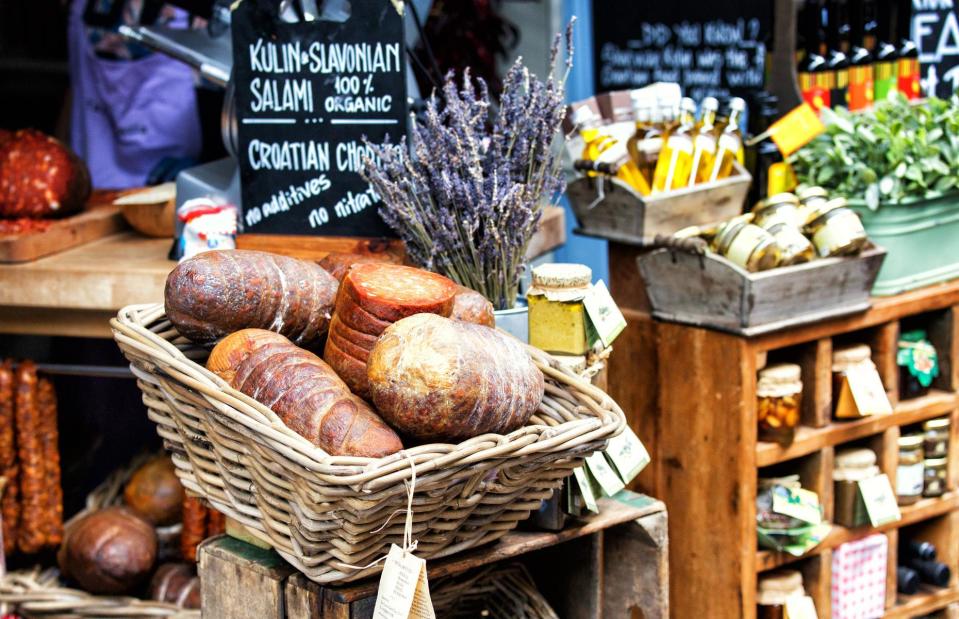
Anna Levan/Shutterstock
Probably the most famous food market in Britain and the oldest in London, Borough Market has been in Southwark in some form for at least one thousand years. Following the construction of the first medieval bridge sometime in the 1st century, the area which helped join London with the ports and towns of the south became popular with farmers, bakers and fishermen hoping to sell their produce to travellers. Today, the market is typically packed with both local and international traders selling their wares from myriad stalls, shops and restaurants and it is the biggest food market in the capital.
National Botanic Garden of Wales, Carmarthenshire
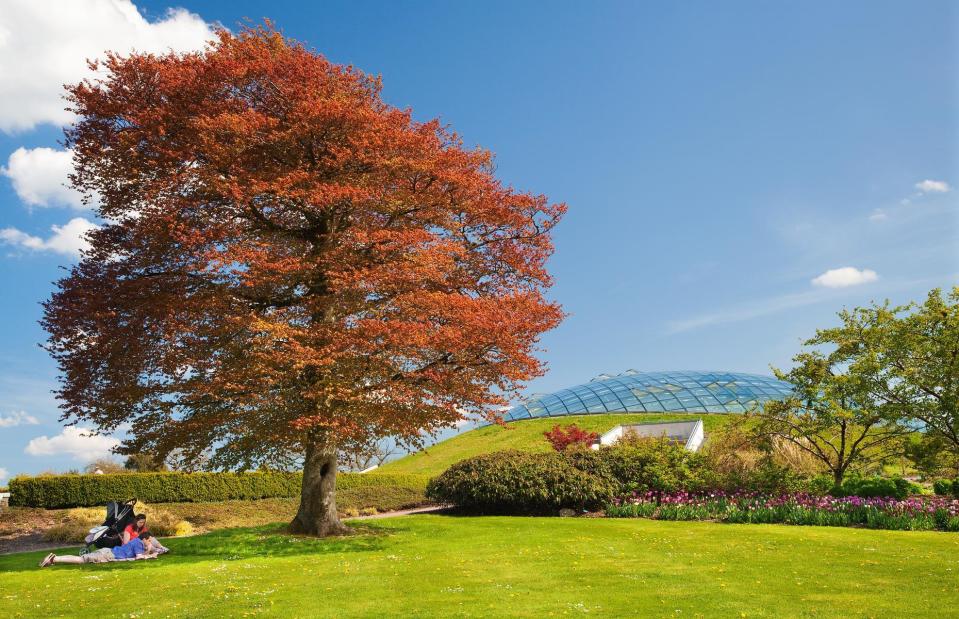
Billy Stock/Shutterstock
Sprawling across 560 acres of Welsh countryside, the National Botanic Garden of Wales is a truly magnificent sight. With an incredible living collection of around 6,000 varieties of plants, the garden is also a centre for botanical research and conservation as well as a leading visitor attraction. Designed by Norman Foster, its beautiful single-span glasshouse is the largest of its kind in the world and hosts endangered species from across the globe in a Mediterranean climate.
Discover 30 reasons to love Wales
Scott Monument, Edinburgh, Scotland
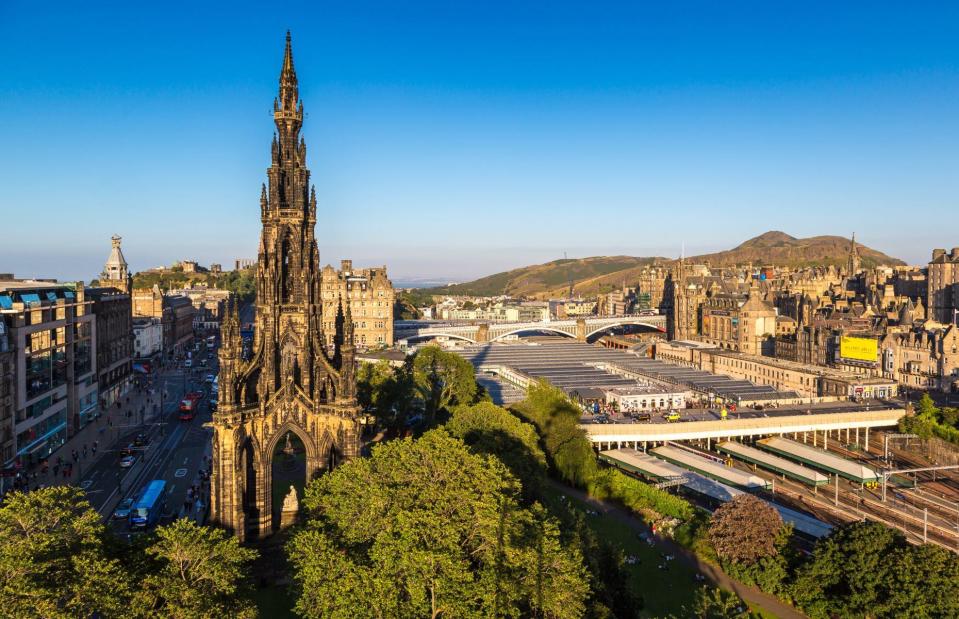
S-F/Shutterstock
Built to honour the Scottish author Sir Walter Scott, this breathtakingly beautiful Victorian Gothic monument is one of Edinburgh’s most recognisable attractions. Up the monument’s spiral steps, there’s a museum on the first floor decorated with four magnificent stained-glass windows and right at the top of the monument, four viewing platforms offer fantastic views across the city.
Dreamland, Margate, England
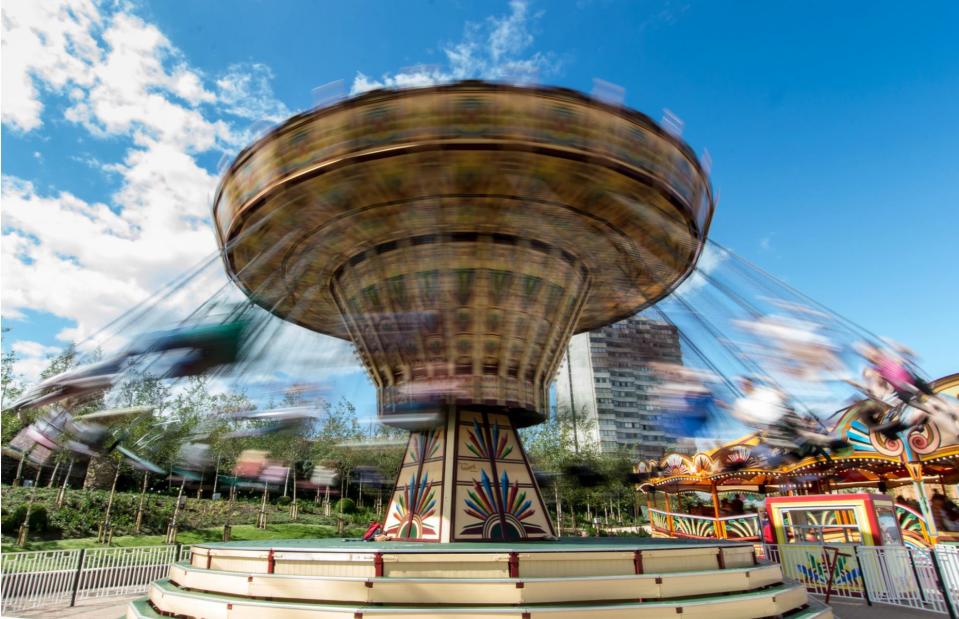
Andrew H/Flickr/CC-BY-2.0
This vintage-style amusement park on the Kent coast is as dreamy as it sounds. The theme park site dates back to the early 1870s when it was an entertainment centre known as the Hall-by-the-Sea, yet it wasn’t until the 1920s that John Henry Iles snapped it up, transforming it into an amusement park. Dreamland has retained much of its original charm, its iconic Scenic Railway has been beautifully restored alongside other vintage rides like the Chair-O-Plane (pictured) and its Scenic Stage is a popular outdoor venue for live music and events.
Discover what else to see and do in Margate
Tate, England
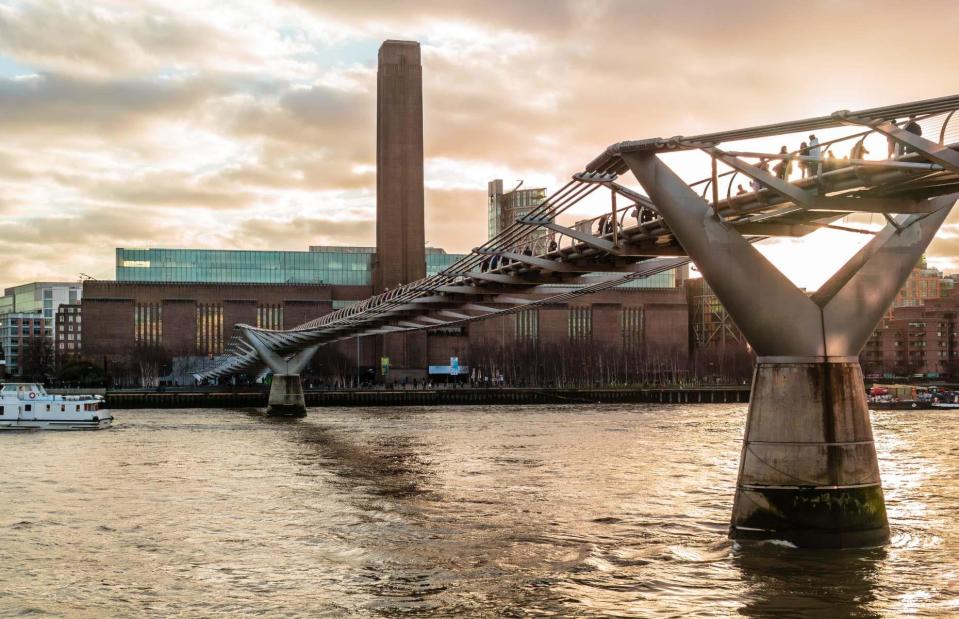
lucasinacio.com/Shutterstock
There are four Tate art galleries across Britain – Tate Modern (pictured) and Tate Britain in London, and also Tate St Ives and Tate Liverpool. The history of Tate began in 1889 when Industrialist Henry Tate offered his collection to the nation, and today the main focus is modern and contemporary art. The landmark Tate buildings are uniquely recognisable and the Tate Modern is a former Bankside Power Station, with its turbine hall a dramatic visitor entrance.
St Paul's Cathedral, London, England
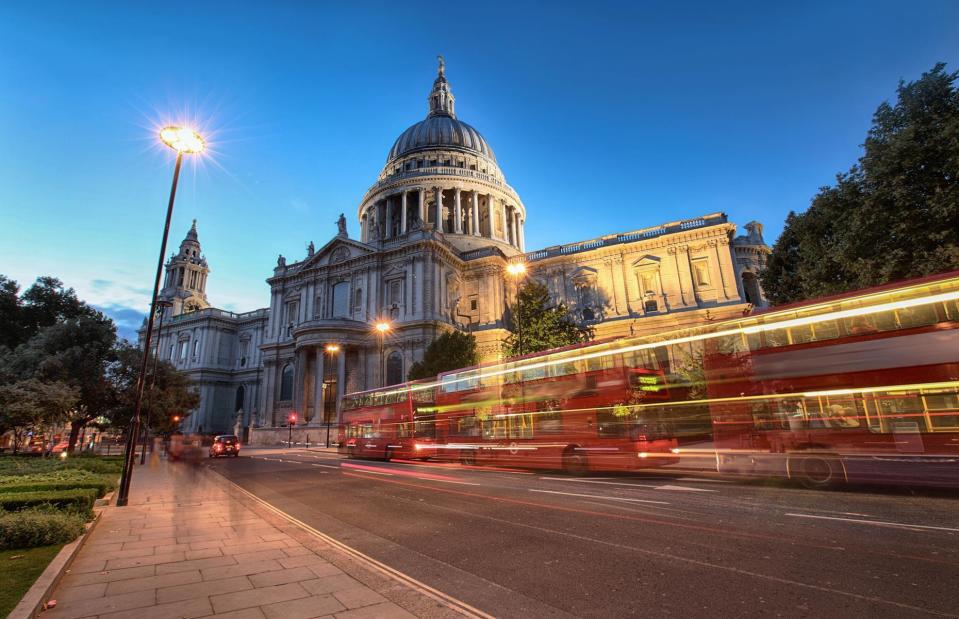
Pavel Rumme/Shutterstock
A cathedral dedicated to St Paul's has stood in the highest point of the city of London for more than 1,400 years. Built between 1675 and 1710, the present St Paul’s building was designed by famous architect Sir Christopher Wren, after the former structure was destroyed by the Great Fire of London. Today, the grand cathedral is one of London’s most famous buildings. At the top, the Golden Gallery provides unbeatable cityscape views while the cathedral’s crypt is where Sir Christopher Wren was laid to rest.
Snowdon Mountain Railway
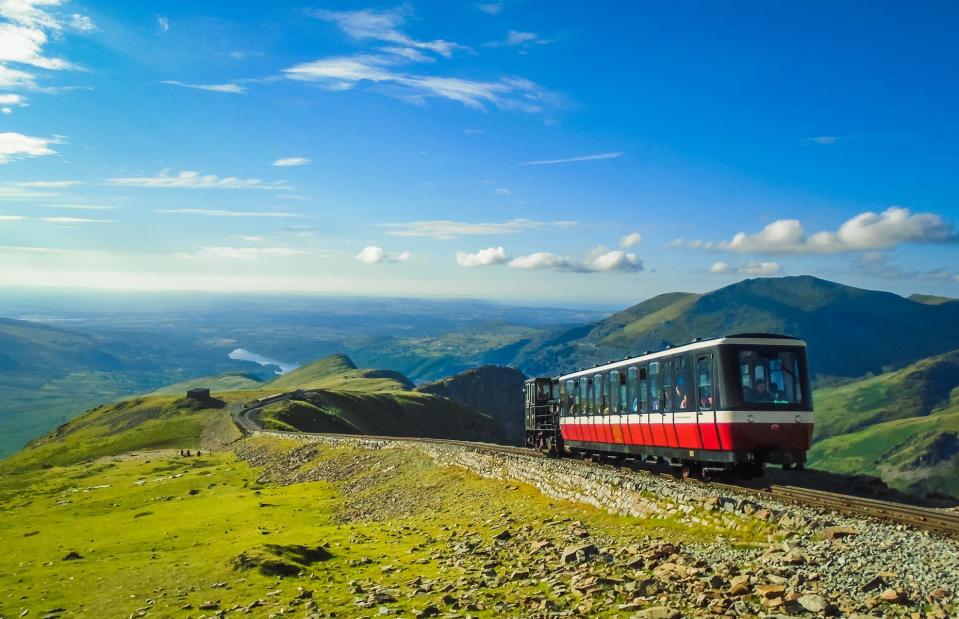
Dilchaspiyaan/Shutterstock
Chugging up and down the highest peak in England and Wales, the Snowdon Mountain Railway has been operating its steam service since 1896. The scenic train journey takes passengers from the pretty Welsh town of Llanberis to the rugged summit, climbing through some of Snowdonia National Park’s most breathtaking scenery. Snowdon’s formidable 3,560-foot summit (1,085m) provides some of the most jaw-dropping views across the park and beyond.
Explore more of the UK’s most stunning national parks
Cheddar Gorge & Caves, Somerset, England
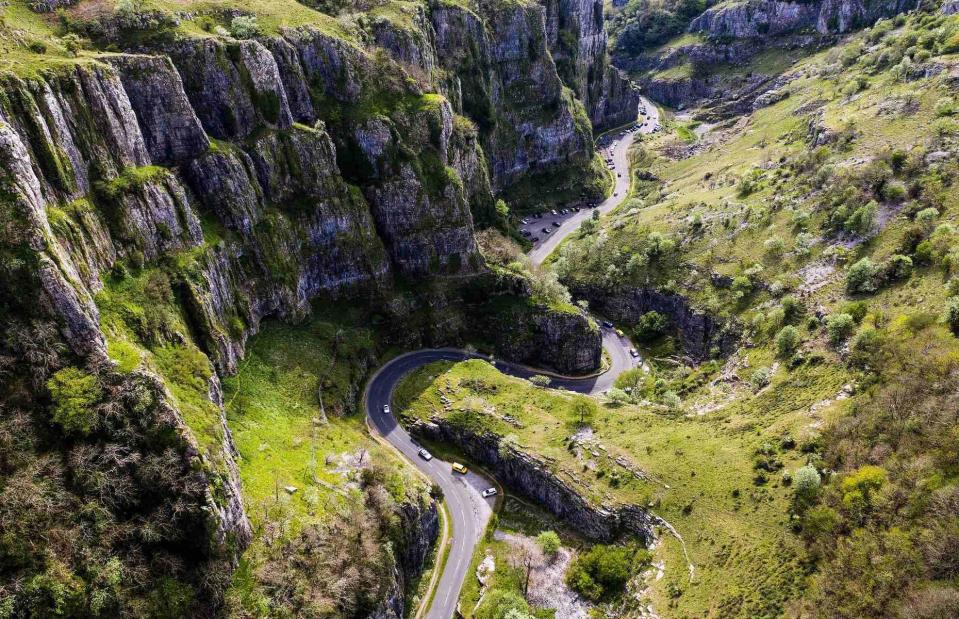
William Brown/Alamy Stock Photo
Britain’s biggest gorge is 400 feet deep (122m) and three miles long. A natural formation set within Somerset's scenic Mendip Hills, a public road runs through it and a circular walk departs from Cheddar village.
Glenfinnan Viaduct, Inverness-shire, Scotland
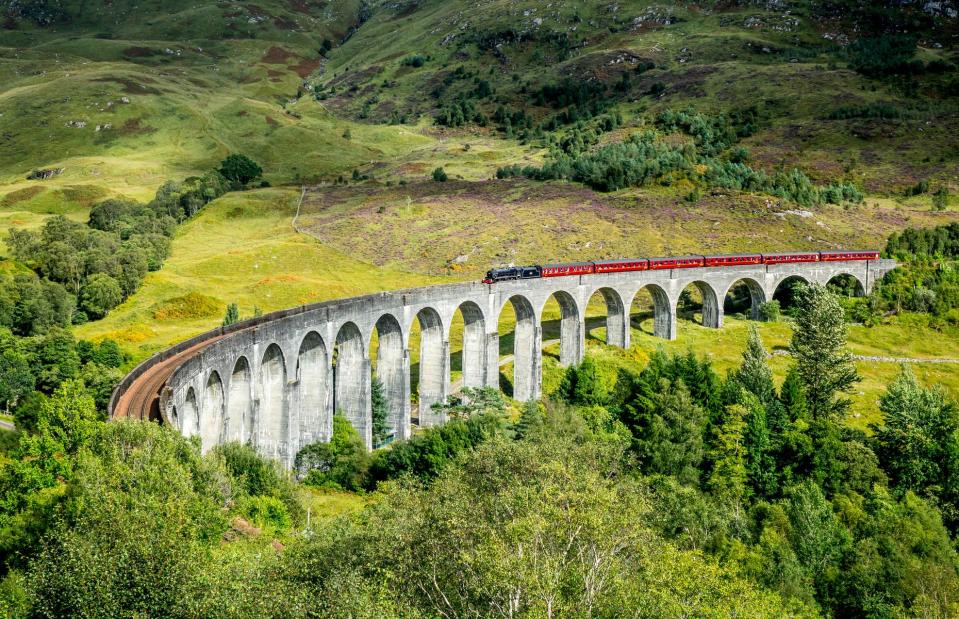
Tom DeZby/Shutterstock
Located in the stunning Scottish Highlands, the Glenfinnan Railway viaduct is one of Scotland’s most famous landmarks. Completed in the early 20th century, the 1,000-foot long (305m) arched structure stretches across the River Finnan near Fort William. With its magical setting, the marvellous feat of engineering has been featured in numerous Harry Potter films as the iconic Hogwarts Express. The Jacobite Steam train loops between Fort William and Mallaig through the scenic countryside and is considered one of the best railway journeys in the world.
These are the UK’s most beautiful train stations
Smallest House in Britain, Conwy, Wales
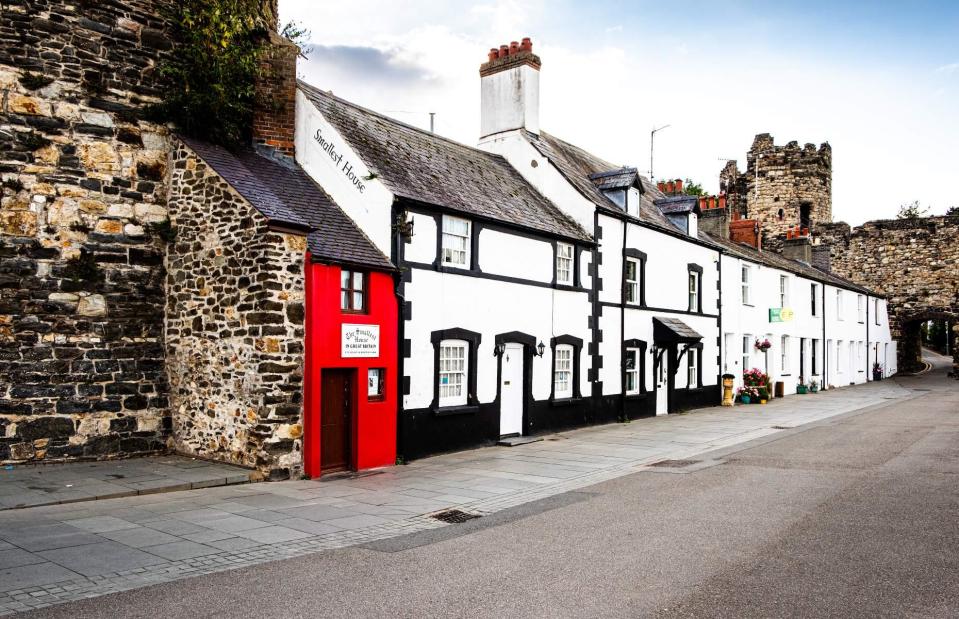
James Clark/Shutterstock
Britain’s tiniest House can be found hidden among a terrace of houses in the Welsh market town of Conwy. Measuring just 72 inches wide (183cm) and 122 inches high (310cm), the adorable house was actually occupied up until 1900 and has operated as a popular tourist attraction ever since.
Whitworth Art Gallery, Manchester, England
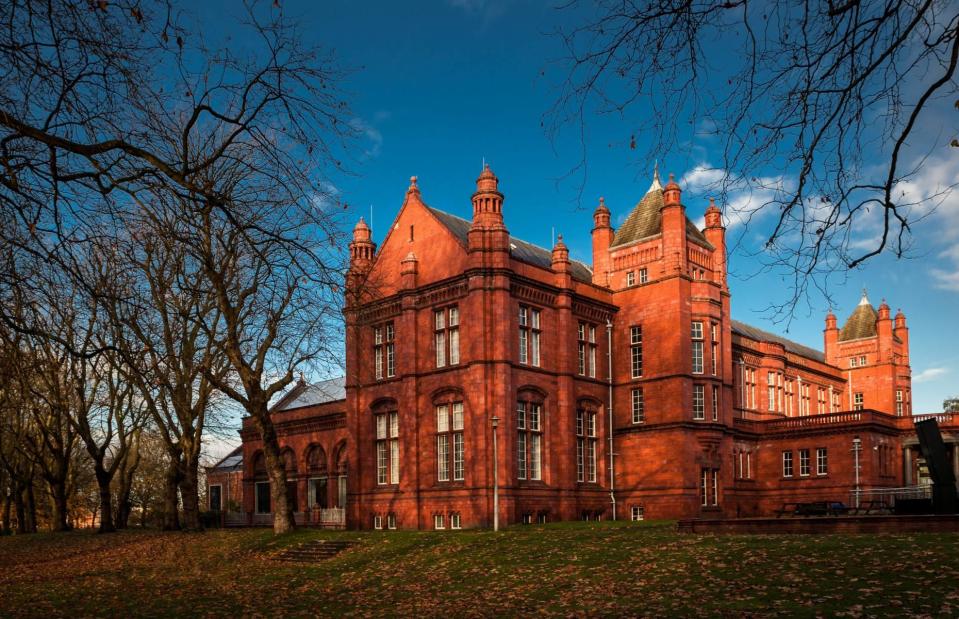
SAKhanPhotography/Shutterstock
Nestled within gorgeous parkland, Manchester’s Whitworth Art Gallery was the first English gallery in a park when it was founded in 1889. Since then, the Whitworth, which now forms part of the University of Manchester, underwent a £15 million redevelopment in 2015. The award-winning extension not only doubled the exhibition space but also seamlessly integrated the gallery with the surrounding landscape while retaining the best of the historic building. The peaceful art garden, pretty sculpture terrace and café at treetop level make the Whitworth a city favourite.
Chatsworth, Derbyshire, England
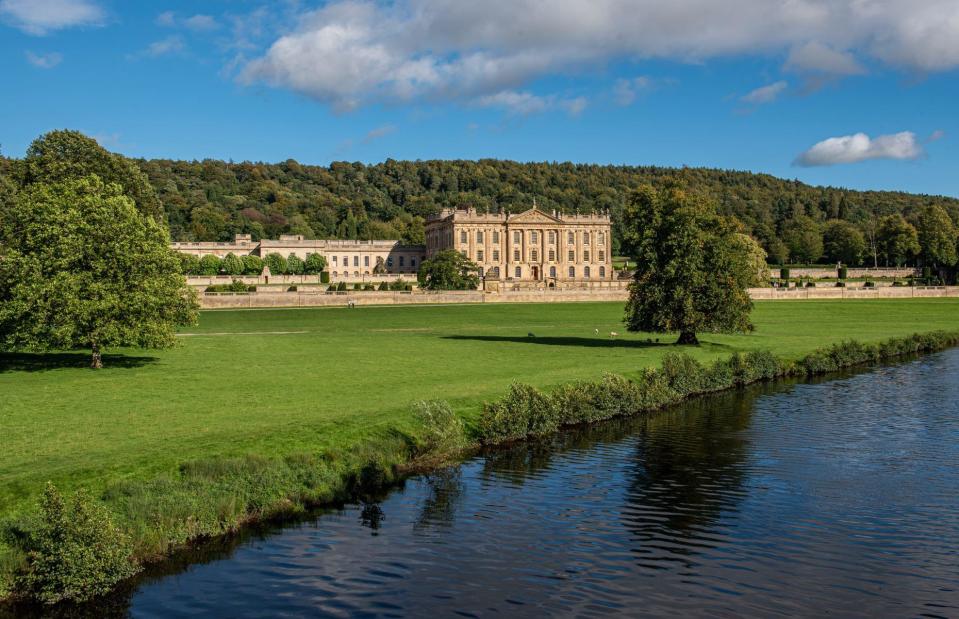
mountaintreks/Shutterstock
Set in England’s picturesque Peak District, Chatsworth House is one of the UK’s most beautiful and impressive country houses. First constructed during the 1500s, the original Tudor mansion was rebuilt during the late 17th century by the first Duke of Devonshire who created the current Baroque mansion. Chatsworth is currently the home of the 12th Duke of Devonshire and his wife Amanda, Duchess of Devonshire. The estate famously appeared in the 2005 film Pride & Prejudice starring Keira Knightley and Matthew Macfadyen.
Glastonbury Tor, Somerset, England
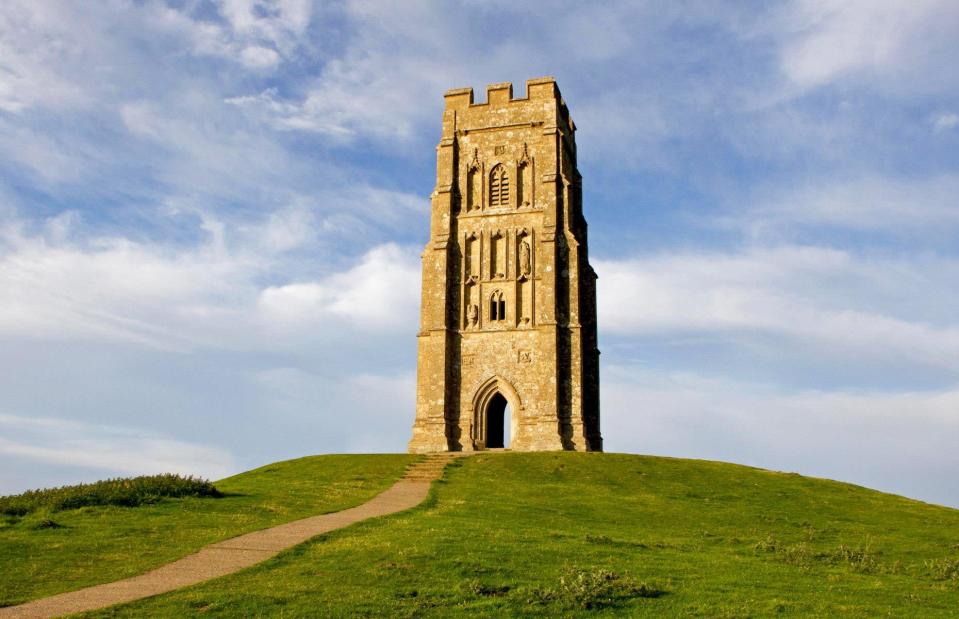
DFuller/Shutterstock
Overlooking Somerset’s scenic countryside, Glastonbury Tor has been one of Britain’s most spiritual sites for Pagans and Christians for over a thousand years. Linked to myths and legends, it’s thought that beneath the hill there is a hidden cave that you can pass through into the fairy realm of Annwn. The beautiful remains of the 14th-century church of St Michael tower over its grassy summit, offering sweeping panoramas across the tranquil landscape.
Abbey Road, London, England
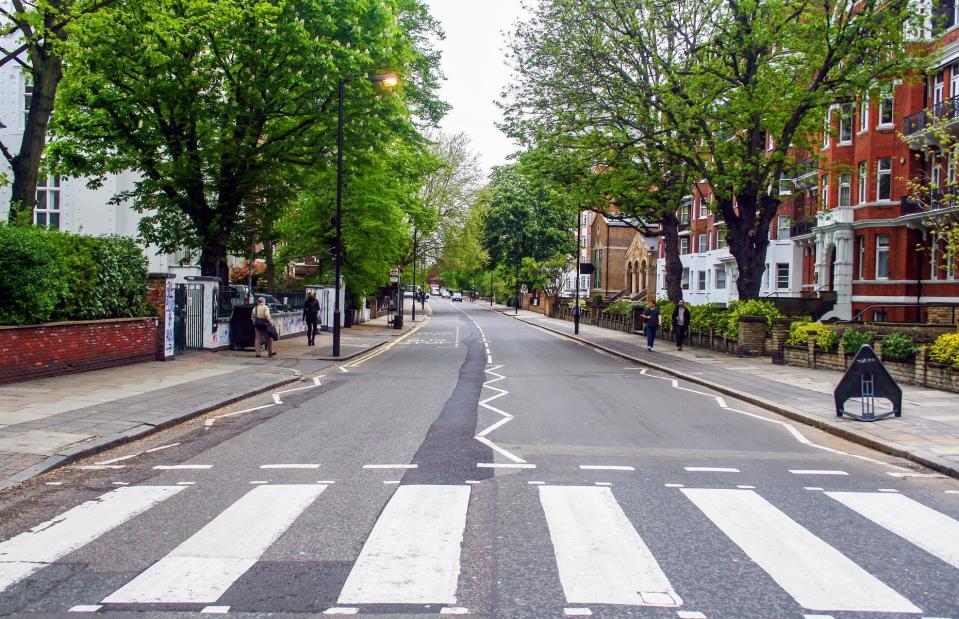
berm_teerawat/Shutterstock
Beatles fans will certainly recognise this road and its iconic zebra crossing in northwest London. The crossing rose to fame when the Beatles featured it on the cover of their 1960s album Abbey Road – the nearby studio they recorded the album in was renamed Abbey Road Studios in its honour. Since then, the crossing has been given Grade II-listed status and attracts tourists from all over the world who recreate the famous image of the Fab Four crossing the road.
Yorkshire Sculpture Park, Wakefield, England
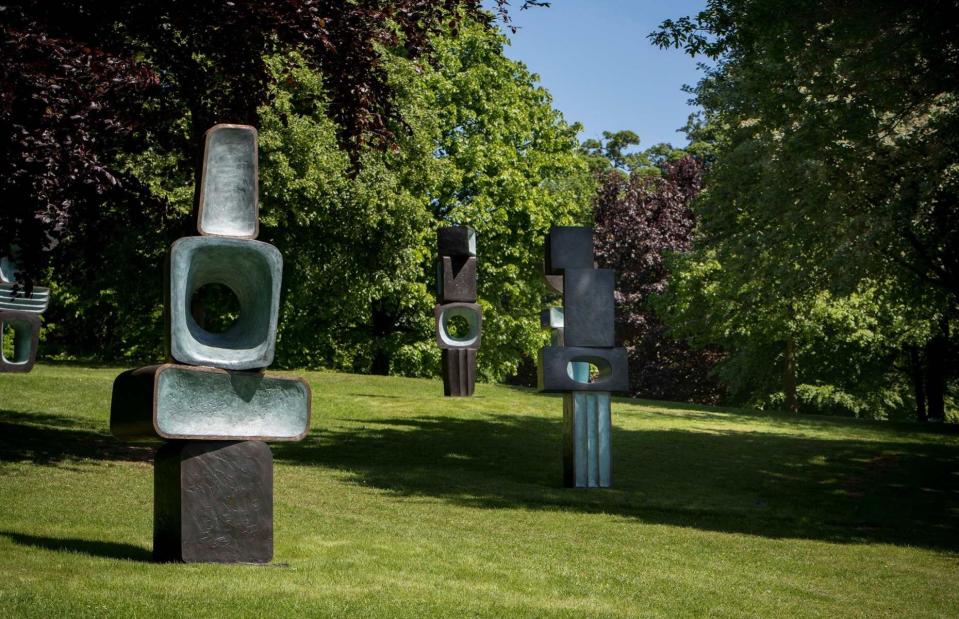
Yorkshire Sculpture Park/Facebook
Just outside Wakefield, the Yorkshire Sculpture Park boasts more than 80 outdoor sculptures and installations set within 500 acres of beautiful parklands and woods. Stroll around to find works by the likes of Barbara Hepworth (pictured), Henry Moore, David Nash and Damien Hirst. Don't miss the indoor galleries, including The Weston, which hosts a changing programme of world-class art as well as a shop and beautiful Scandinavian-inspired restaurant.
Inspired to visit? Check out how to spend a whole weekend in Wakefield here
St Davids Cathedral, Pembrokeshire, Wales
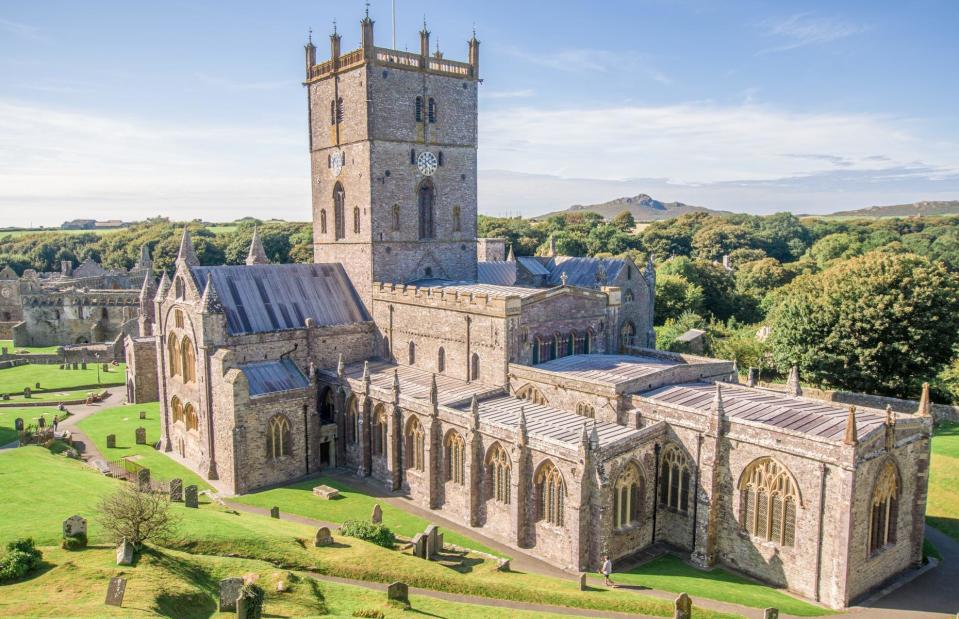
sosn/Shutterstock
Rising above the tiny city of St Davids, this glorious cathedral in Pembrokeshire is thought to be one of the greatest religious sites in Wales. A place steeped in history, the present 12th-century structure stands where St Davids founded a monastery around AD 600. With its gorgeous architecture, historic artwork and magnificent chapel, St Davids Cathedral is a real highlight of Britain’s smallest city.
Kelpies, Falkirk, Scotland

Rachael Arnott/Shutterstock
These breathtaking 100-foot high (30m) stainless steel equine statues in Scotland are the largest equine sculptures in the world. Created by artist Andy Scott, the Kelpies were modelled on two real-life Clydesdale horses, named Duke and Baron. The sculptures sit within The Helix, a green space created in 2003 to connect the communities in Falkirk. Considered an incredible feat of engineering, the Kelpies have become one of the most famous outdoor installations in the UK.
Check out the world’s most jaw-dropping sculptures and statues
Hadrian's Wall, Cumbria and Northumberland, and Tyne and Wear, England
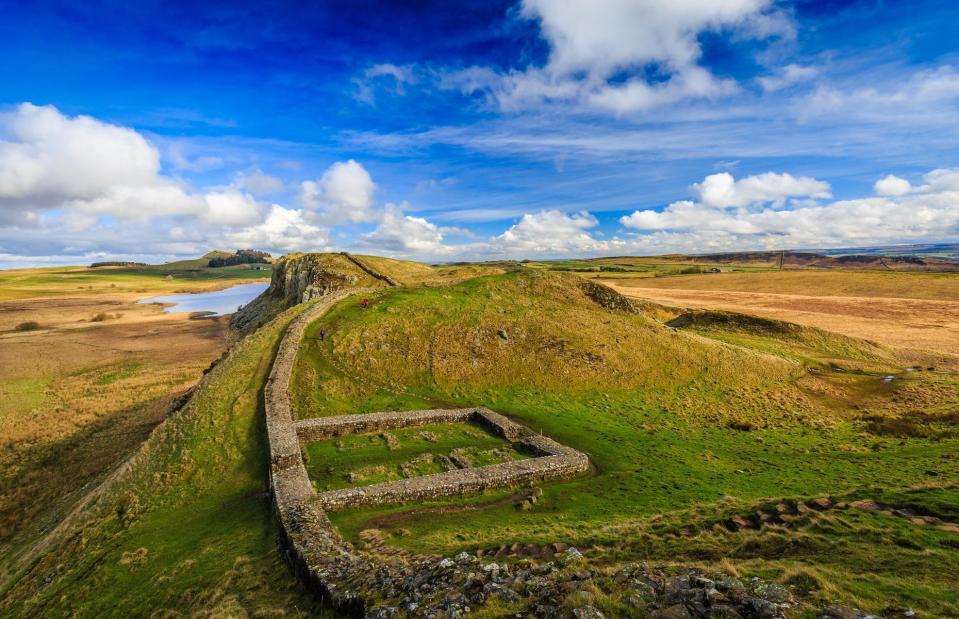
Michael Conrad/Shutterstock
In AD 122, Roman emperor Hadrian ordered this epic stone wall to be built to protect Roman civilisation from the Barbarians in the north. The impressive wall once trailed a staggering 73 miles (129km) from coast-to-coast in the north of England and it is without a doubt the most breathtaking Roman structure in Britain. Alongside the wall, various forts, milecastles, barracks and settlements with museums exploring the history of the Roman Empire are dotted along this once northern frontier.
Discover the secrets of the world’s most famous walls
York Minster, York, England
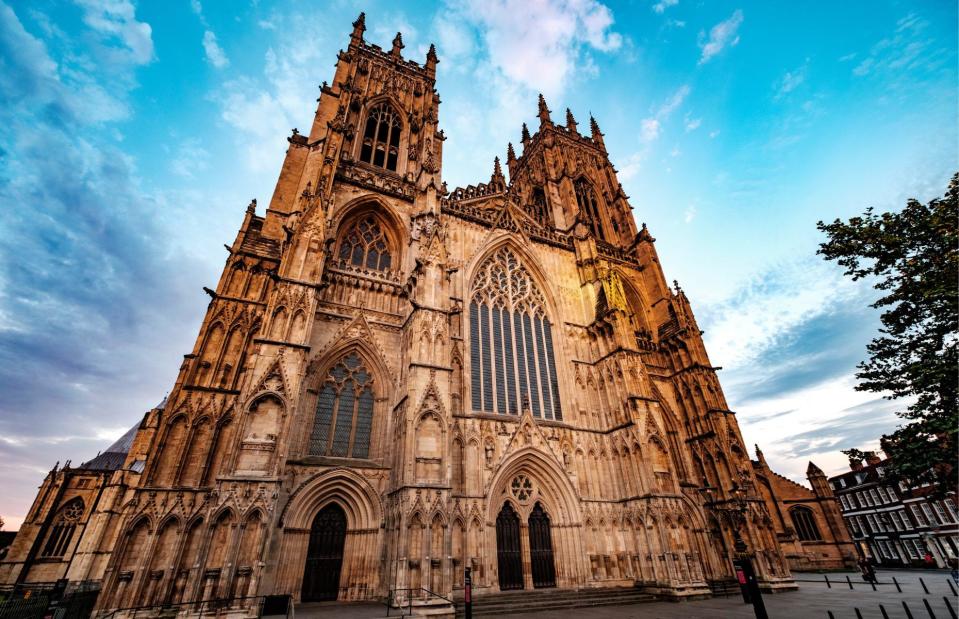
Jez Campbell/Shutterstock
Standing majestically over the historic streets of York, this Gothic structure is one of the most impressive cathedrals in England. Known as the largest medieval cathedral in northern Europe, York Minster is famed for its stunning windows, particularly its grand 15th-century Great East Window, which is the largest example of medieval stained glass in the world. Looming over York, its mighty tower boasts spectacular views across the northeast.
Fourth Plinth, London, England
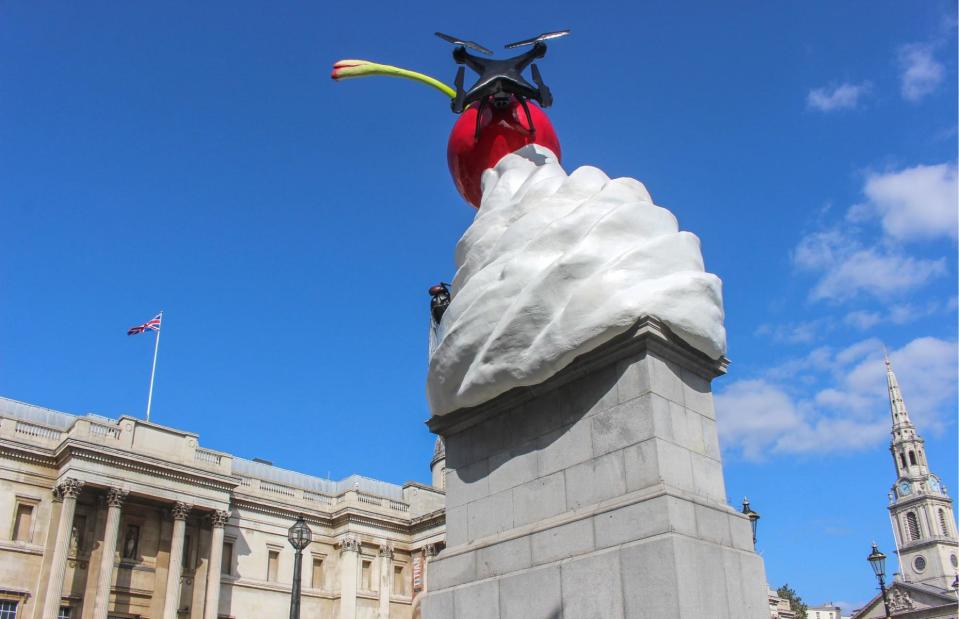
CK Travels/Shutterstock
Trafalgar Square's fourth plinth in London remained empty for 150 years – it was meant to feature a bronze statue of William IV but funds sadly ran out. The other three plinths depict statues of military officers Henry Havelock, Charles James Napier and King George IV. In 1998, the Royal Society of Arts launched the Fourth Plinth Project and the platform has hosted a range of contemporary artwork ever since and is now one of the most famous public art commissions in the world. The newest plinth design, Heather Phillipson’s The End, has been on display since July 2020.
Laverstoke Mill, Hampshire, England
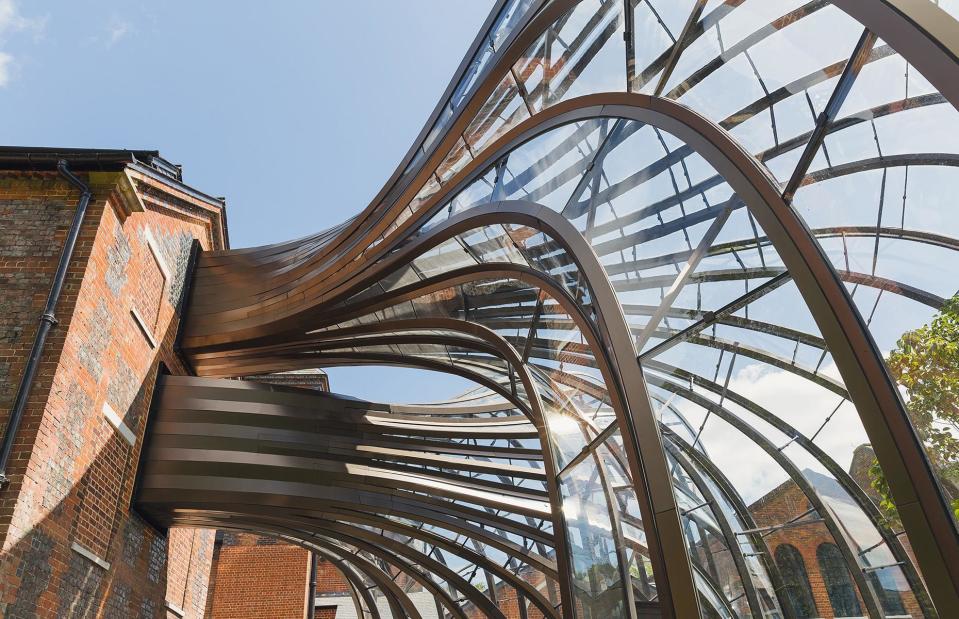
MartinDF/Shutterstock
There has been a mill in rural Laverstoke in northwest Hampshire recorded as far back as the 1086 Domesday Book. The mill was once under the ownership of William the Conqueror and even King Henry VIII enjoyed four royal visits there during his reign. Since 2010, Laverstoke Mill has been the site of the Bombay Sapphire Distillery. The distillery’s gorgeous Mediterranean Glasshouse which houses the botanicals used in the gin, is a superb 21st-century addition to the historic mill complex.
Zip World Slate Caverns, Snowdonia, Wales
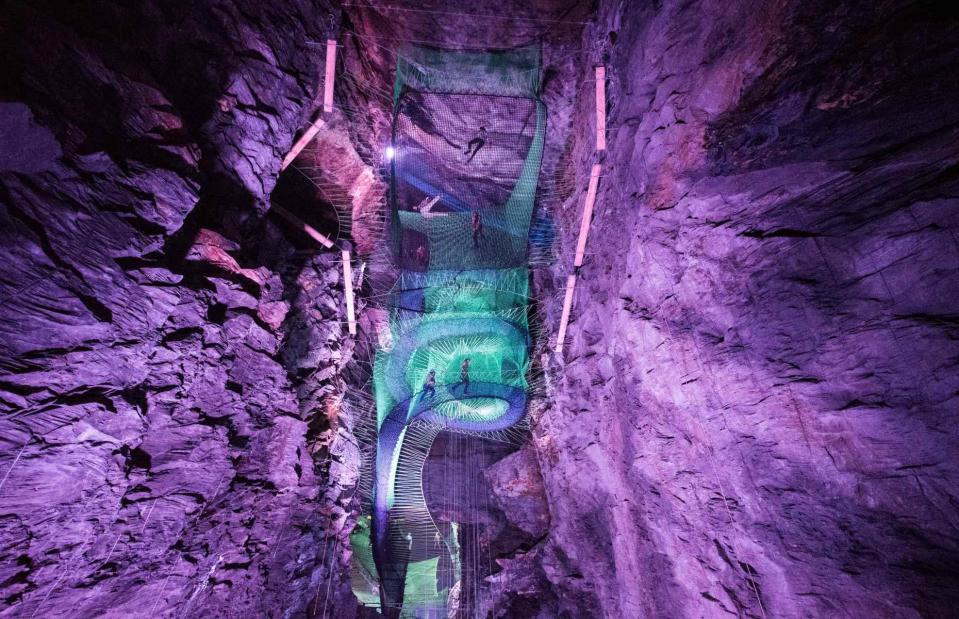
Zip World/Slate Caverns
Deep within the mountains of the Snowdonia National Park in North Wales, attractions at Zip World Slate Caverns include Bounce Below, a subterranean playground of trampolines (pictured); a deep mine tour that takes passengers 500-feet deep (152m) into the man-made caverns; Titan 2, a tour and zipline experience; and Caverns, an underground assault course. First quarried by the Romans, Wales once extracted half a million tonnes of slate from mines like this one every year and exported it all over the world.
Discover more of the UK’s best underground attractions
Aerospace Bristol, Bristol, England

Aerospace Bristol/Facebook
Bristol is awash with aeronautical history: the supersonic passenger jet was largely developed here and all the UK Concordes made their maiden flight from the city’s runway. Aerospace Bristol, a state-of-the-art museum dedicated to Britain’s airspace heritage and innovation, opened its doors in 2017. It explores the history of aviation in Britain to the present day through a variety of interactive displays and exhibits including planes, helicopters and satellites. The centrepiece of Aerospace Bristol is the Concorde Alpha Foxtrot, the last supersonic jet to ever be built and the last to fly in 2003.
Stirling Castle, Stirling, Scotland
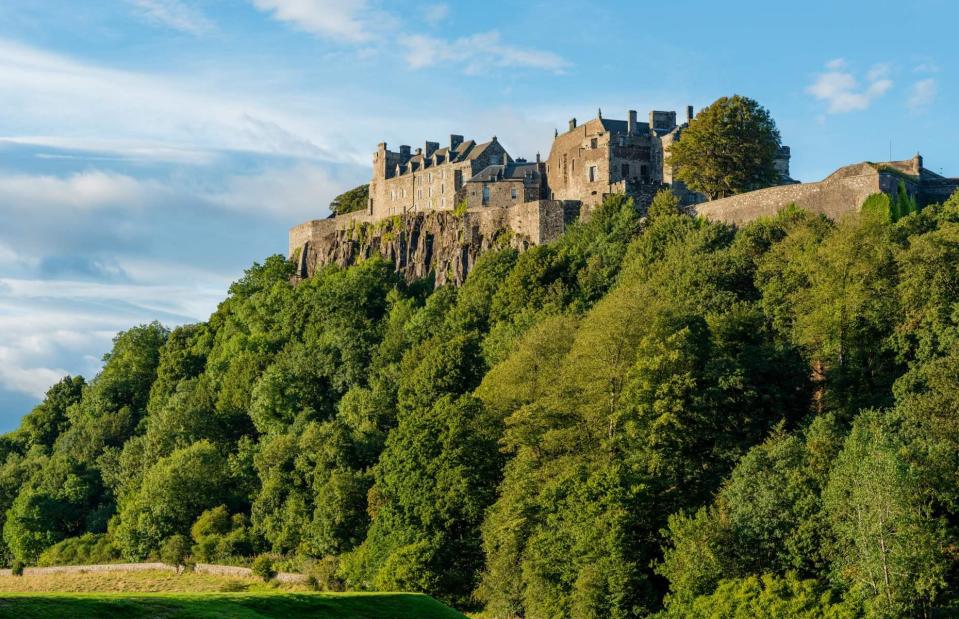
cornfield/Shutterstock
One of Scotland’s largest and most important castles, this ancient stronghold sits atop Castle Hill, a vast volcanic rock overlooking the River Forth. Dating back nearly 1,000 years, Stirling Castle has a long history of conflict – during the Wars of Scottish Independence, the castle changed hands eight times in just 50 years. It also has royal roots as the childhood home of Mary Queen of Scots and James VI and I. Notable sights from the castle include the beautiful Royal Palace, one of the best-preserved Renaissance buildings in the UK and the magnificent Great Hall, the largest banqueting hall of its kind in Scotland.
Black Country Living Museum, Dudley, England
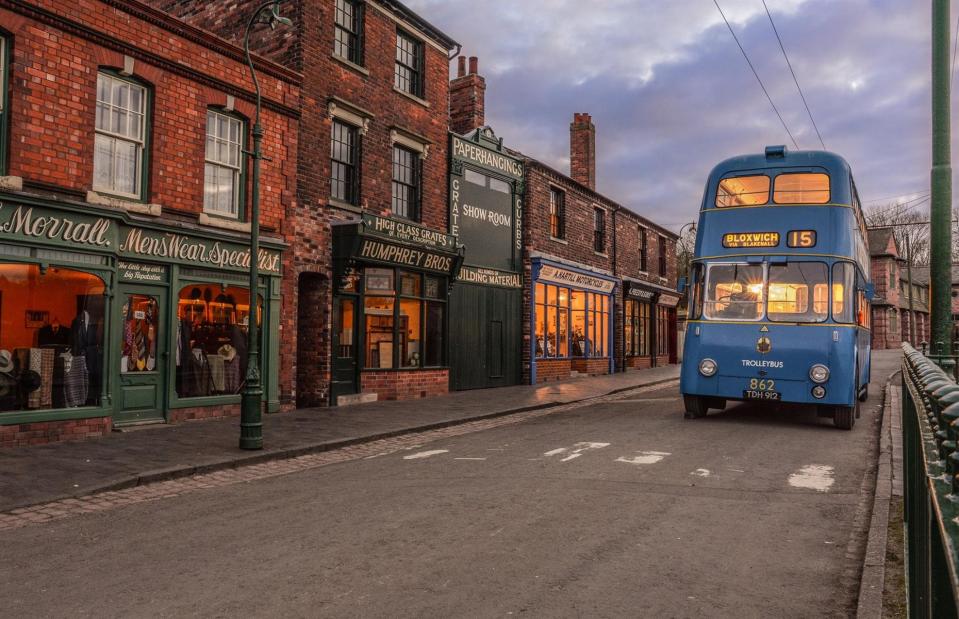
Black Country Living Museum/Facebook
Considered the first industrial landscape in the world, the Black Country Living Museum explores the history of this iconic area of the West Midlands. Stretching across 26 acres, the incredible open-air living museum is a recreation of a historic mining village – including houses, shops, trams, a mine and a cinema typically showing silent films from the 1920s. With its mighty size and impressive attention to detail, the museum has featured in various films and TV shows including the BBC drama, Peaky Blinders, starring Cillian Murphy.
Kelvingrove Art Gallery & Museum, Glasgow, Scotland
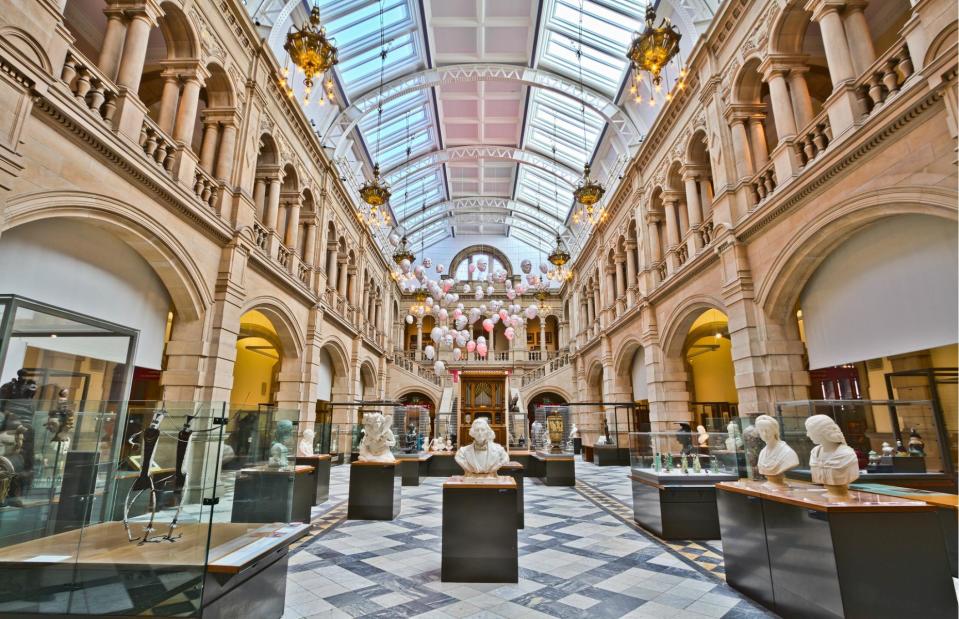
Michael D Beckwith/Flickr/CC0 1.0
One of Scotland’s most popular free attractions, the Kelvingrove Art Gallery and Museum has been a firm favourite in Glasgow since it opened in 1901. Inside its stunning Spanish Baroque building is one of the greatest art collections in Europe spanning thousands of years. Highlights from the collection include Rembrandt’s ‘Man in Armour’ and ‘Christ the Adulteress’ by Titian along with work by Salvador Dalí and Vincent van Gogh.
Discover more of the world’s most beautiful museums
The Needles, Isle of Wight, England
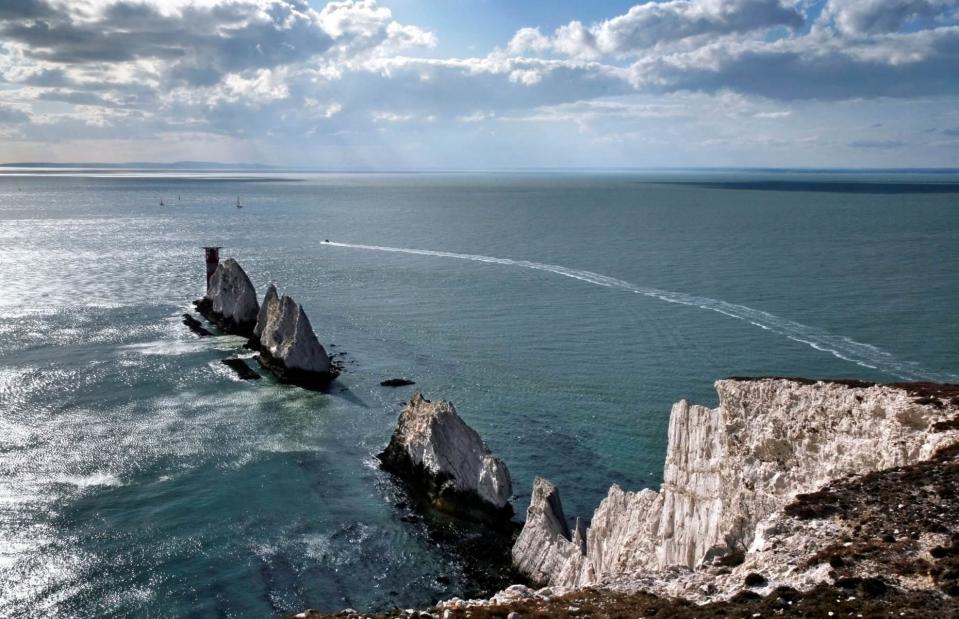
Brook Fabian/Alamy Stock Photo
The unmistakable chalk stacks that puncture the sea at the furthest western point of the Isle of Wight are the Solent isle’s best-known attraction. The Needles Chairlift takes visitors over the pretty coloured sand cliffs of Alum Bay to the beach providing picturesque views of the famous landmark. Built in the mid-19th century, the Isle of Wight’s famous red and white striped Needles Lighthouse soars over the end of the furthest stack and is an impressive sight.
The Hepworth Wakefield, West Yorkshire, England
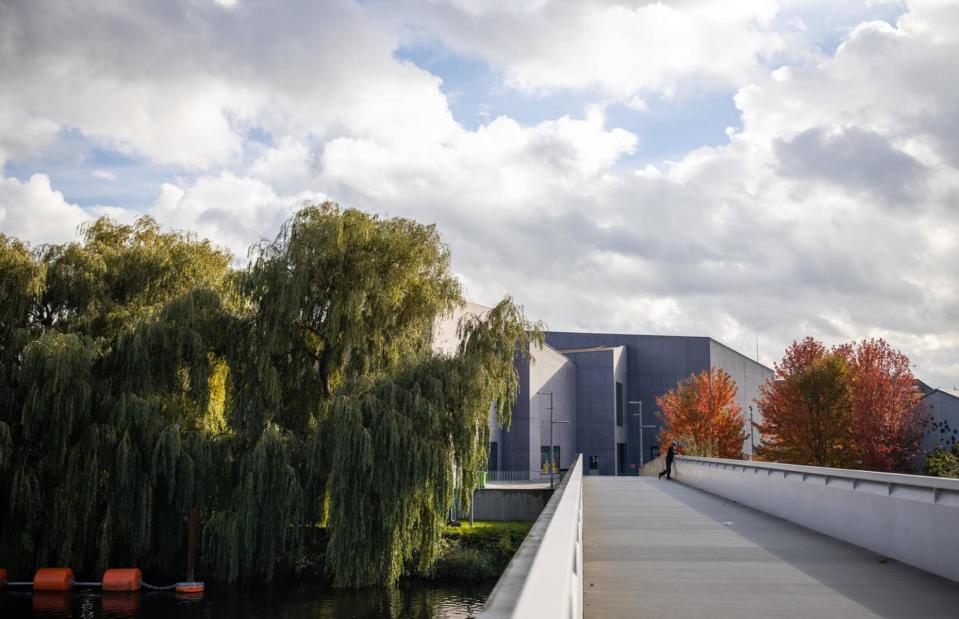
The Hepworth Wakefield/Facebook
Stretching across 65,000 square feet (6,000sqm) in Wakefield, this internationally renowned contemporary art museum is the UK’s largest purpose-built gallery. Opened in 2011, the gallery was designed by David Chipperfield Architects and named after the acclaimed British sculptor Barbara Hepworth, who was born in the West Yorkshire city. The Hepworth Wakefield showcases an important permanent collection of key works by an array of leading British artists, including Hepworth and Henry Moore.
Tintern Abbey, Monmouthshire, Wales
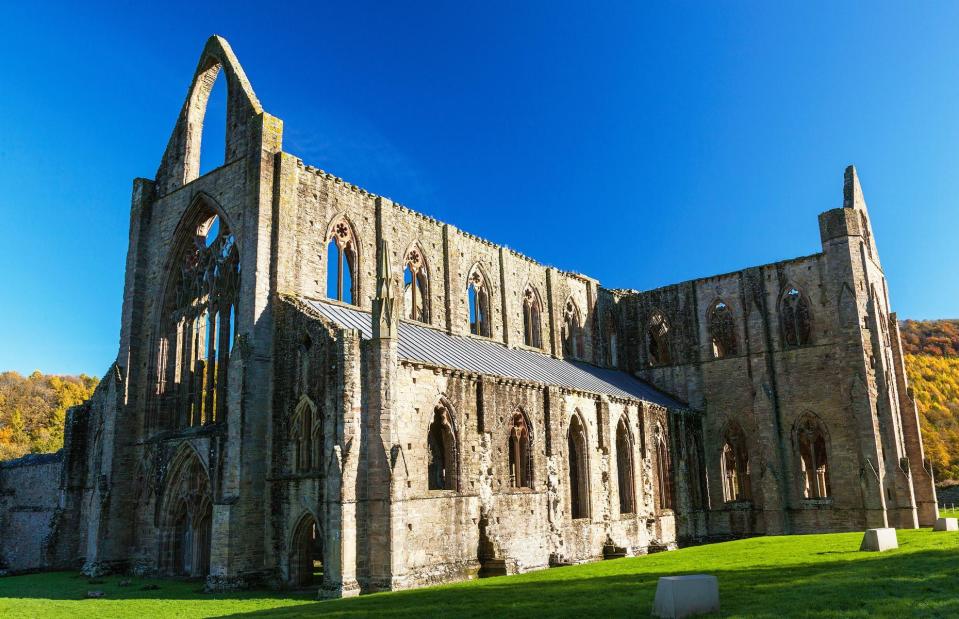
Billy Stock/Shutterstock
Considered a Gothic masterpiece, the ruins of Tintern Abbey sit on the Welsh bank of the River Wye in Monmouthshire. Founded in 1131 by Cistercian monks, the beautiful ivy-covered building has since been the inspiration of many writers including English poet William Wordsworth in his poem of the same name. Nearly 500 years later, the abbey continues to be a national icon and one of the most breathtaking monastery ruins in Wales.
London Eye, London, England

ProgressImaging/Shutterstock
Sat on the banks of the River Thames, the London Eye has been an iconic part of the capital’s skyline for over 20 years. Launched in 1999, the giant Ferris wheel was designed by Marks Barfield Architects and at an impressive 443 feet high (135m) it is the largest cantilever observation wheel in Europe. Also known as the Millennium Wheel, its 32 capsules that symbolise the city’s boroughs provide jaw-dropping views across London.
Loch Ness, Inverness-shire, Scotland

4kclips/Shutterstock
The legend of the mythical Loch Ness monster has drawn visitors here for years. An impressive 788 feet deep (240m), Loch Ness contains more water than all the lakes of England and Wales combined and is the second-largest and deepest loch in the country. Bordered by rolling hills and picturesque mountains, with the magnificent ruins of Urquhart Castle overlooking its waters, the loch is one of Scotland’s most breathtaking natural wonders.
Explore more of the UK’s most stunning natural wonders
Warwick Castle, Warwickshire, England
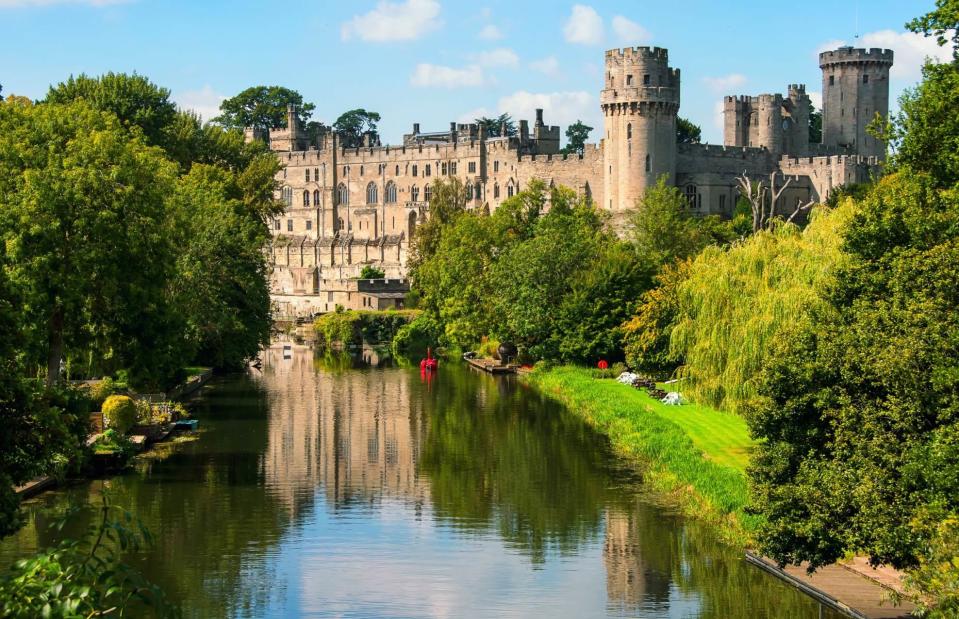
Madrugada Verde/Shutterstock
Once a Saxon fortress built on the banks of the River Avon to protect the town from Dane invasions, William Conqueror later built the original wooden Warwick Castle over a thousand years ago. What you see today is a grand turreted 12th century stone stronghold, one of the finest and most complete medieval castles in the country. The castle dominates its namesake city and is one of the best-known attractions in the West Midlands.
Kew Gardens, London, England
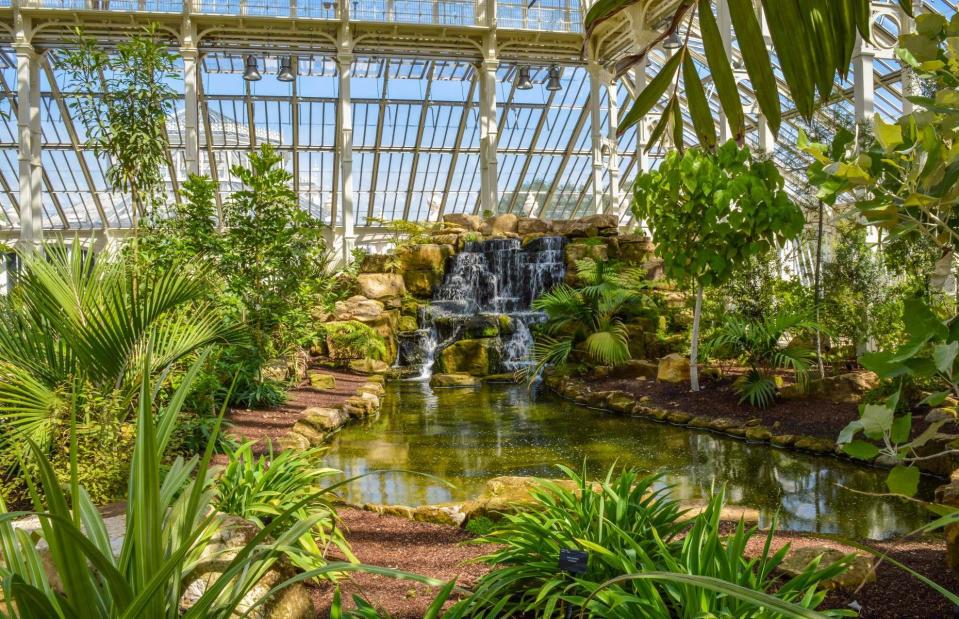
Kornelija Cakarun/Shutterstock
Situated in southwest London, the Royal Botanic Gardens, Kew holds one of the most important plant collections in the world. Its Grade I-listed Victorian Glasshouse, Temperate House, is the largest structure of its kind in the world, home to 1,500 species of rare temperature plants. World-renowned as a scientific institution for plant and fungal research, Kew Gardens became a designated World Heritage Site in 2003.
Explore more of the world’s most beautiful gardens
Chester Zoo, Cheshire, England

Hill2k/Shutterstock
Britain is filled with wonderful zoos, not least in London and Edinburgh, but arguably the best of the bunch is in Chester in northwest England. First opened in the 1930s, Chester Zoo leads the way in animal conservation, education and science and is the most visited zoo in the UK. Spread across 128 acres, the zoo is home to over 500 species of rare, exotic and endangered wildlife and over 35,000 animals including black rhinos, cheetahs and jaguars.
Skara Brae, Orkney, Scotland
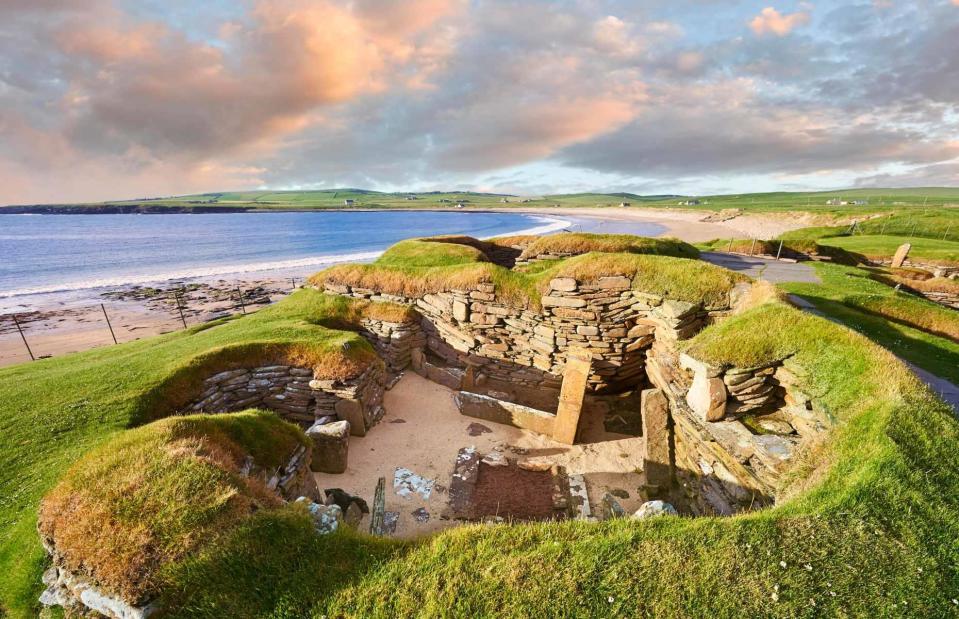
funkyfood London - Paul Williams/Alamy Stock Photo
Nicknamed the 'Scottish Pompeii, this prehistoric village lies on the Scottish archipelago of Orkney. Thought to date back 5,000 years, before even Stonehenge was built, the incredible ruins were uncovered by a storm in 1850. A well-preserved cluster of homes featuring stone beds, dressers and seats, the site paints a remarkable picture of a bygone era. The ancient settlement alongside other prehistoric monuments was awarded World Heritage Status in 1999 due to their rich archaeological treasures.
National Museum Cardiff, Cardiff, Wales
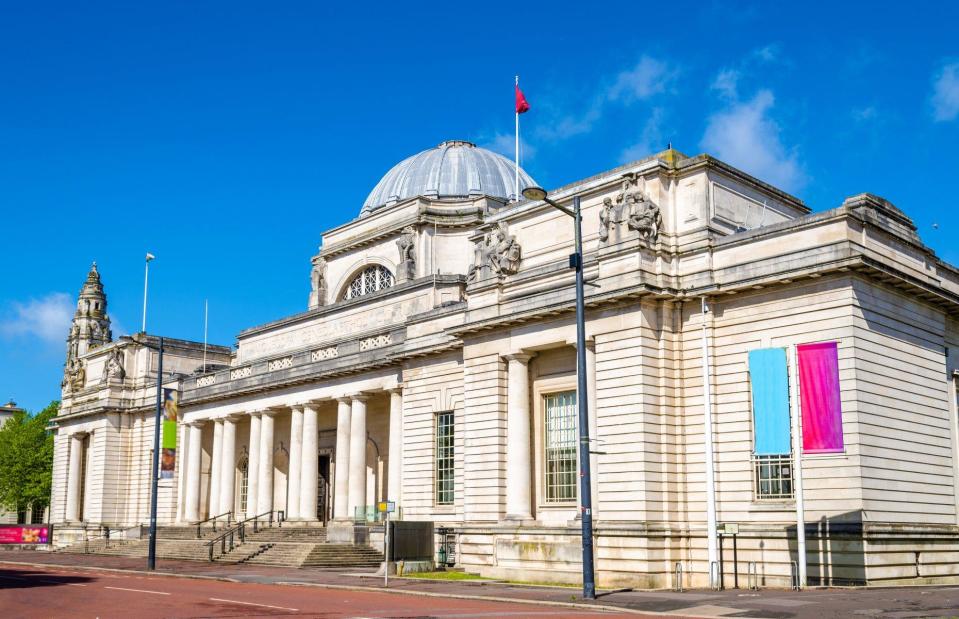
Leonid Andronov/Shutterstock
In the heart of the Welsh capital, the National Museum Cardiff is undoubtedly one of the city’s top tourist attractions. The galleries feature incredible paintings, drawings, sculptures, silver and ceramics from across the globe as well as Wales. The museum is known for hosting one of the finest European art collections spanning 500 years and including everything from 15th-century Italian painters to Welsh artists of the 18th century. The French Impressionist pieces from the likes of Pierre-Auguste Renoir and Claude Monet are just a few of the highlights.
Palace of Holyroodhouse, Edinburgh, Scotland
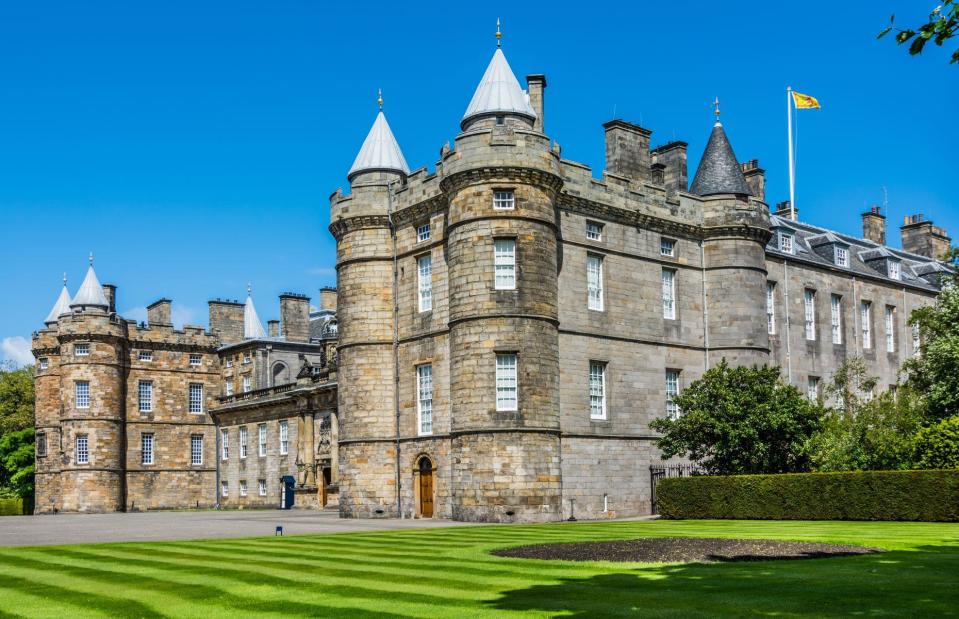
David Ionut/Shutterstock
The official Scottish residence for Her Majesty The Queen, this grand palace stands at the end of Edinburgh’s historic Royal Mile. Rich in royal history, its abbey is believed to have been founded around 900 years ago by David I of Scotland. During the reign of James VI in the 16th century, the royal chambers built around the abbey were converted into a royal palace. Inherited by various royals over centuries, the palace is best known for being the home of Mary, Queen of Scots. Highlights from the palace include its grand apartments, beautiful Scottish artwork and the ruins of Holyrood Abbey.
Hangloose Bluewater, Kent, England

Hangloose Adventure – Bluewater
The longest and fastest zipline in England, this jaw-dropping attraction is located among 50 acres of stunning parkland at Bluewater Shopping Centre in Kent. The zipline platform sits above a 131-foot (40m) chalk cliff, creating a spine-tingling combined drop of more than 180 feet (54m). Four ziplines measuring 2,378 feet (725m) take riders on a thrilling journey across the park. The attraction also features the largest swing in Europe, an outdoor skydiving machine and the largest outdoor climbing wall in Europe.
Check out North America's most beautiful attractions
Radcliffe Camera, Oxford, England

S-F/Shutterstock
Oxford is a city hailed for its beautiful historic buildings, but none are quite like the striking dome-shaped building of Radcliffe Camera. Built between 1737 and 1749, it was designed by architect James Gibbs as a new scientific library and was the first circular library in England. The building was named after the royal physician Dr John Radcliffe and ‘camera’ which translates to ‘chamber’ in Latin. Considered ‘the heart of Oxford’, Radcliffe Camera is now the main reading room of the Bodleian Library and is one of the city’s most beautiful buildings.
Tower of London, London, England
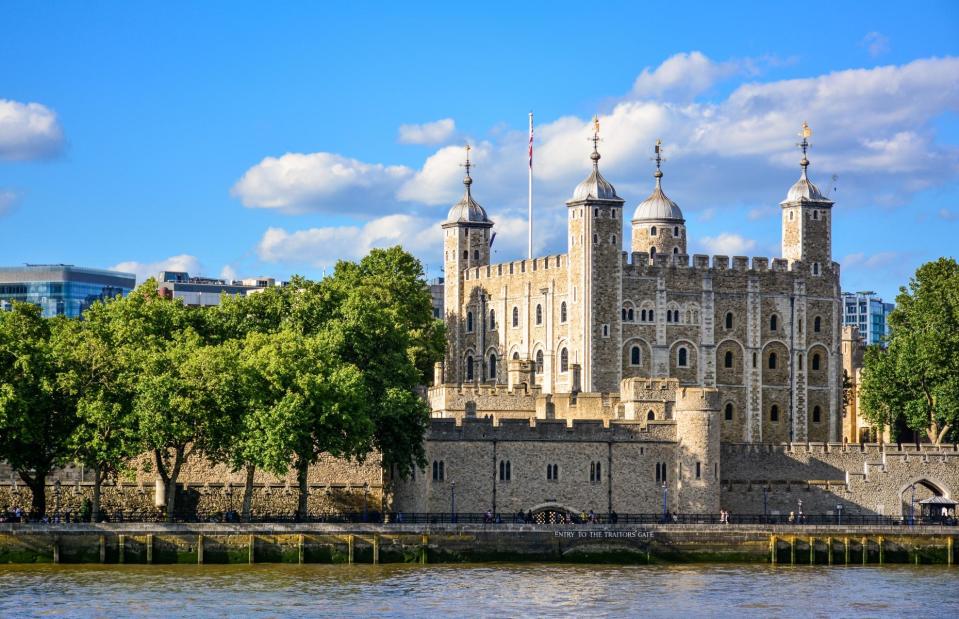
andreyspb21/Shutterstock
Intertwined with mystery, violence and death, the history of London’s formidable fortress dates back almost one thousand years. The Tower of London is famously where two princes, Edward and Richard, disappeared under the reign of Richard III and also where Anne Boleyn was executed for treason in 1536. Highlights from the famous tower include the enchanting Crown Jewels in the Jewel House, the White Tower, home to an impressive collection of armour, and the ominous Bloody Tower.
RHS Garden Wisley, Surrey, England
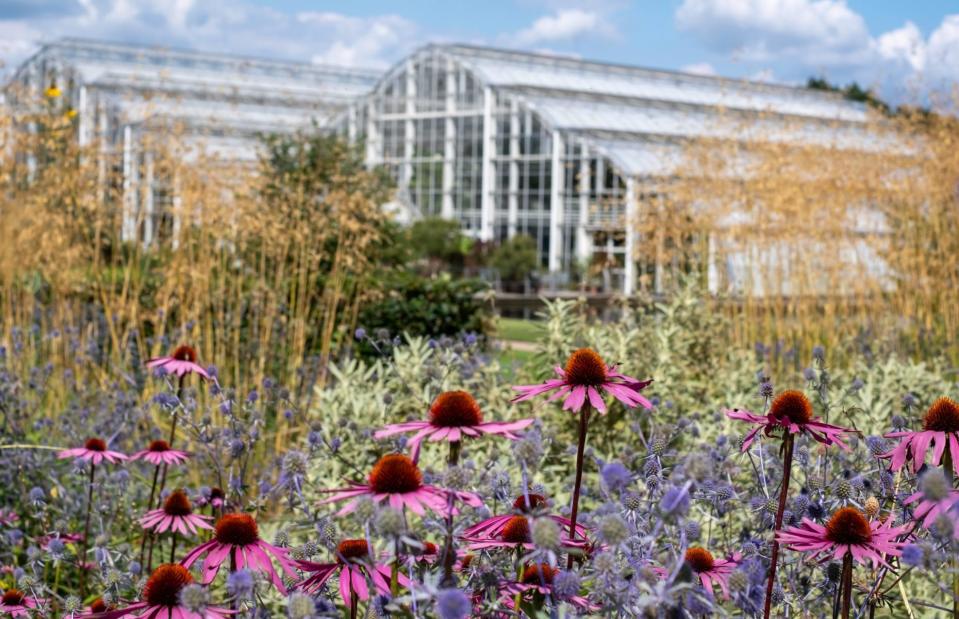
Lois GoBe/Shutterstock
The nation's most popular gardens after Kew, RHS Wisley employs more than 150 full-time gardeners to tend its 240 acres. Explore the glasshouse and its borders, the walled gardens and the lawns of Seven Acres – and don't miss the garden centre. The £35 million RHS Hilltop, a centre dedicated to horticultural science, is also open to the public and here you can wander the World Food, Wildlife and Wellness gardens.
The Deep, Hull, England
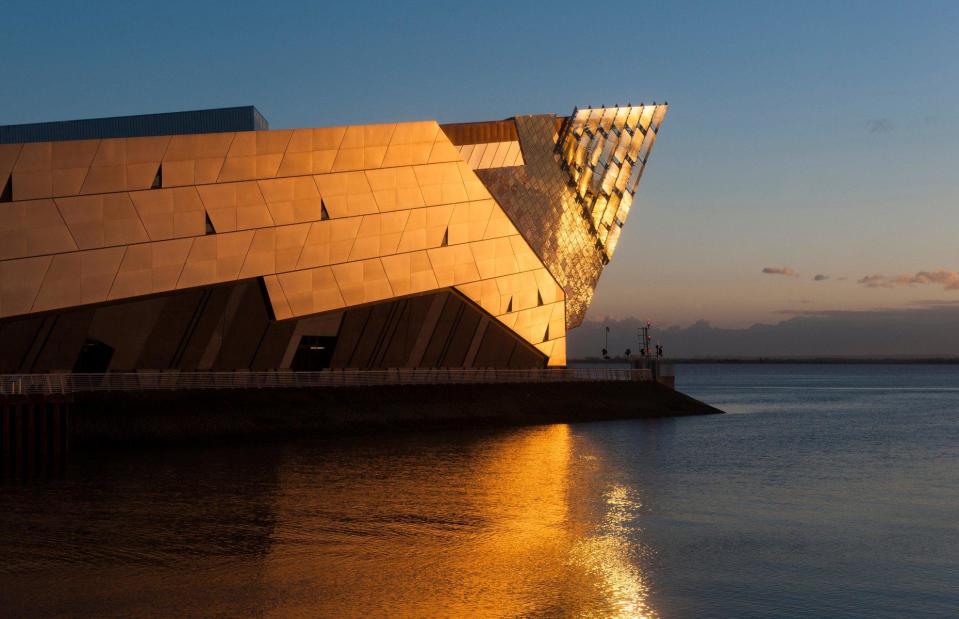
Sean Spencer/Alamy Stock Photo
This glass and aluminium building is the maritime city of Hull's long-standing award-winning aquarium. Home to over 5,000 animals, including the only colony of Gentoo penguins in the north of England, the Deep is a charity dedicated to conservation and education. Kids will love the interactive information boards and the glass lift.
Centre for Alternative Technology (CAT), Powys, Wales
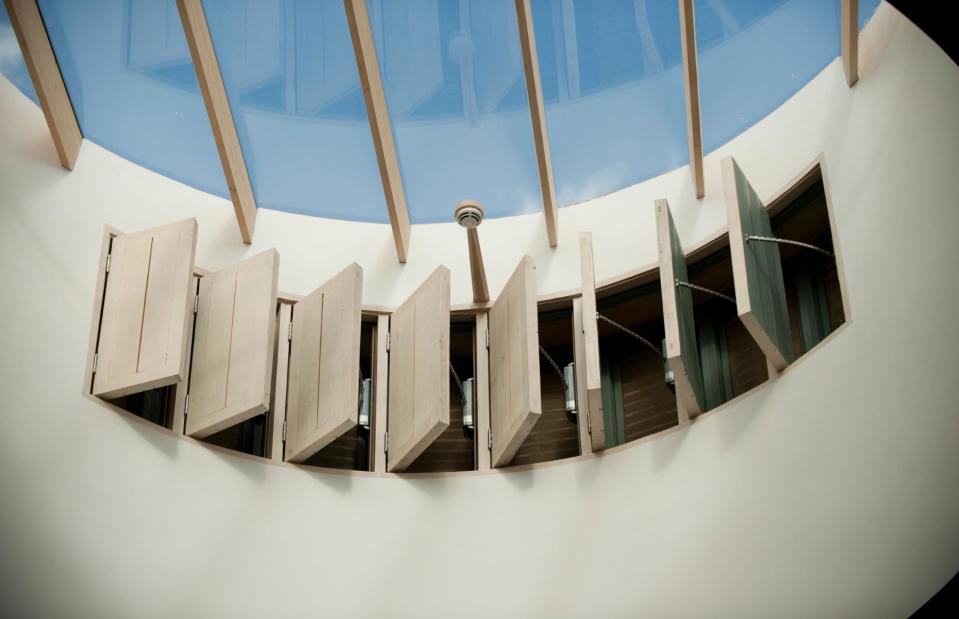
greenwales/Alamy Stock Photo
Wales's Centre for Alternative Technology (CAT) is focused on practical solutions to climate breakdown. Visitors to Britain's leading eco centre can explore the sustainably managed woodlands and organic gardens, see different types of energy-efficient homes and learn about renewable energy (the interactive displays are great for kids). Day and short residential courses are available too.
Nottingham Castle, Nottingham, England
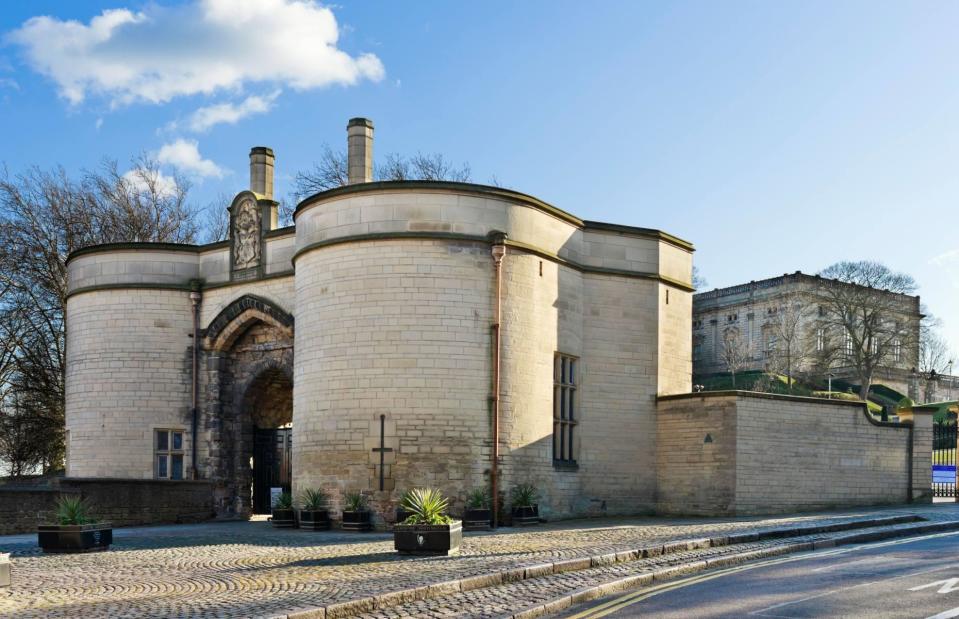
Ian Dagnall/Alamy Stock Photo
Nottingham Castle reopened in 2021 after a £30 million project that included the creation of a Robin Hood experience and visitor centre, landscaping of the castle grounds and refurbishment of the galleries in the Ducal Palace. Although the medieval castle has long since been demolished, its walls and gates remain – the gatehouse (pictured) was renovated in Victorian times. Nottingham Castle has a fascinating history, from the Norman Conquest and the legends of Robin Hood to the Civil War and Industrial Revolution.
Natural History Museum, London, England
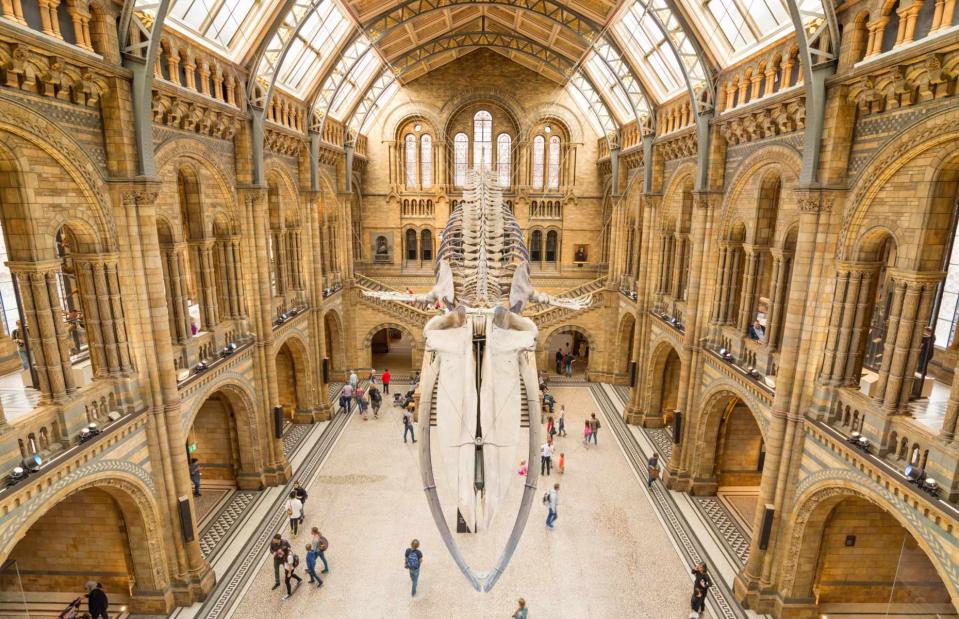
Alex Segre/Alamy Stock Photo
Established 140 years ago, London's Natural History Museum is one of the world’s leading visitor attractions. The museum was founded when biologist Richard Owen convinced the British Museum that a new space was needed for its growing collection of natural history specimens. It is now home to over 80 million specimens spanning billions of years, with exhibits focusing on life and Earth science throughout history. Hailed for its beautiful terracotta Romanesque architecture and incredible dinosaur skeletons, it typically attracts over five million visitors each year.
Portmeirion, Gwynedd, Wales
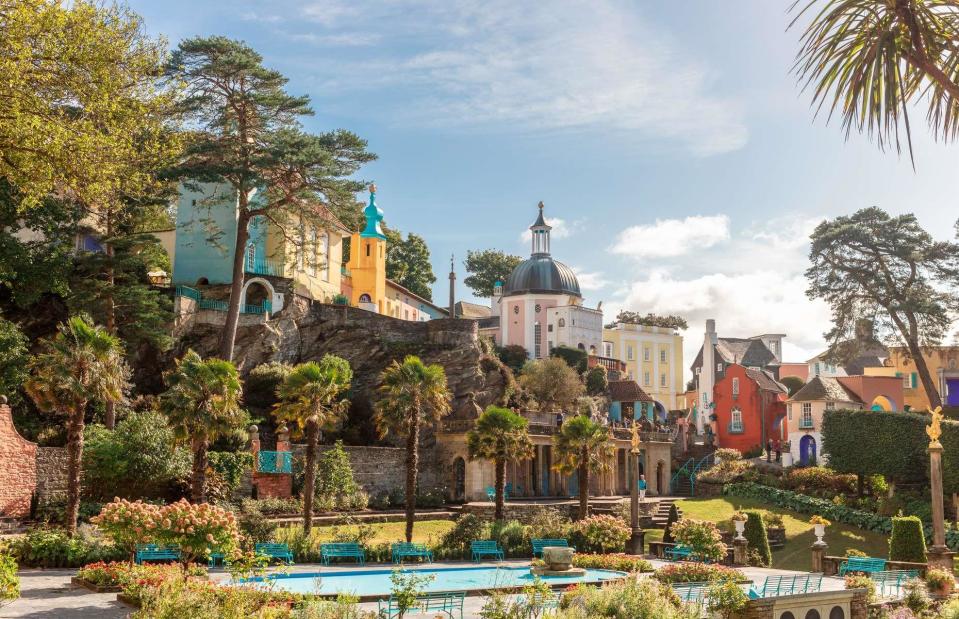
Debu55y/Shutterstock
On the coast of North Wales, the fairy tale village of Portmeirion feels a world away from the rest of the UK. Built between 1925 and 1975 by Welsh architect Sir Clough Williams-Ellis, Portmeirion was inspired by a vibrant Italian village. Surrounded by picturesque mountains, its dreamy Baroque-inspired domes and pretty buildings have drawn artists, writers and musicians from all over the world, including Beatles singer, George Harrison.
Now check out more stunning photos of places you won’t believe are in the UK


